
Business Transformation Secrets People Won’t Tell You One
Jul 05 / Lee Zi Quan
Do you have "sales pain"? This raises costs, hurts sales, and undermines the brand over time. This agony's financial and operational expenses threaten the business. Need stress relief? Continue reading.
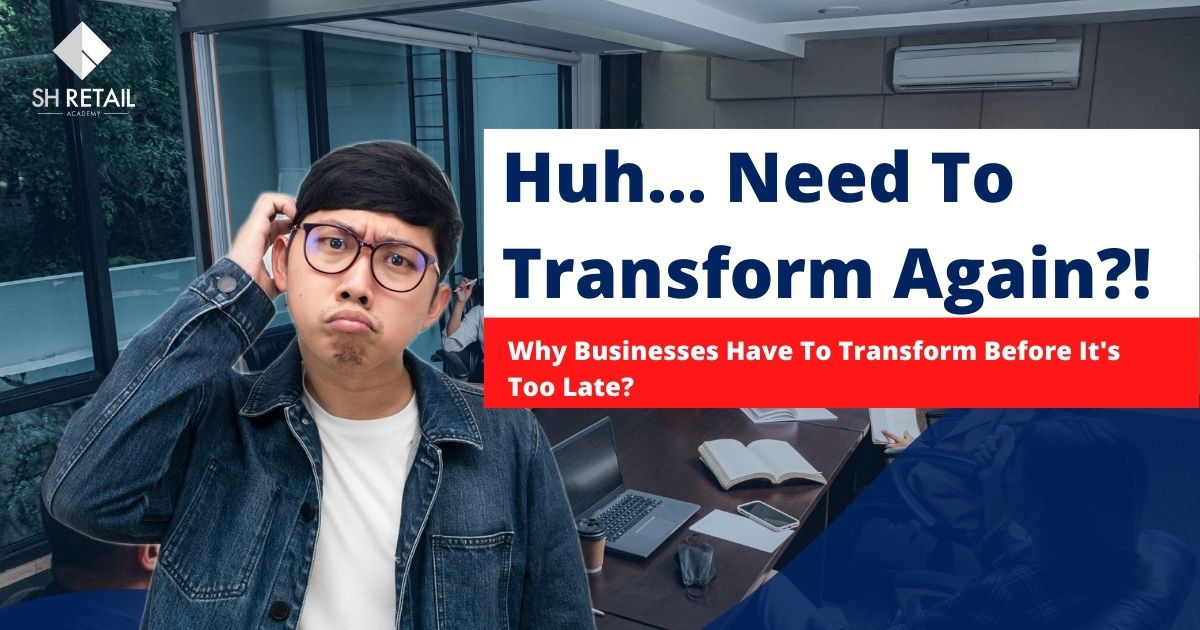
Why Do Businesses Have To Transform Before It's Too Late?
Jun 24 / Lee Zi Quan
KPIs falling behind? Newly transformed businesses emerge and steal your customers? Identified a lot of opportunities to improve, but unfortuntaely, your staff could keep up with market trends? Check out this article now to find out why your business ha
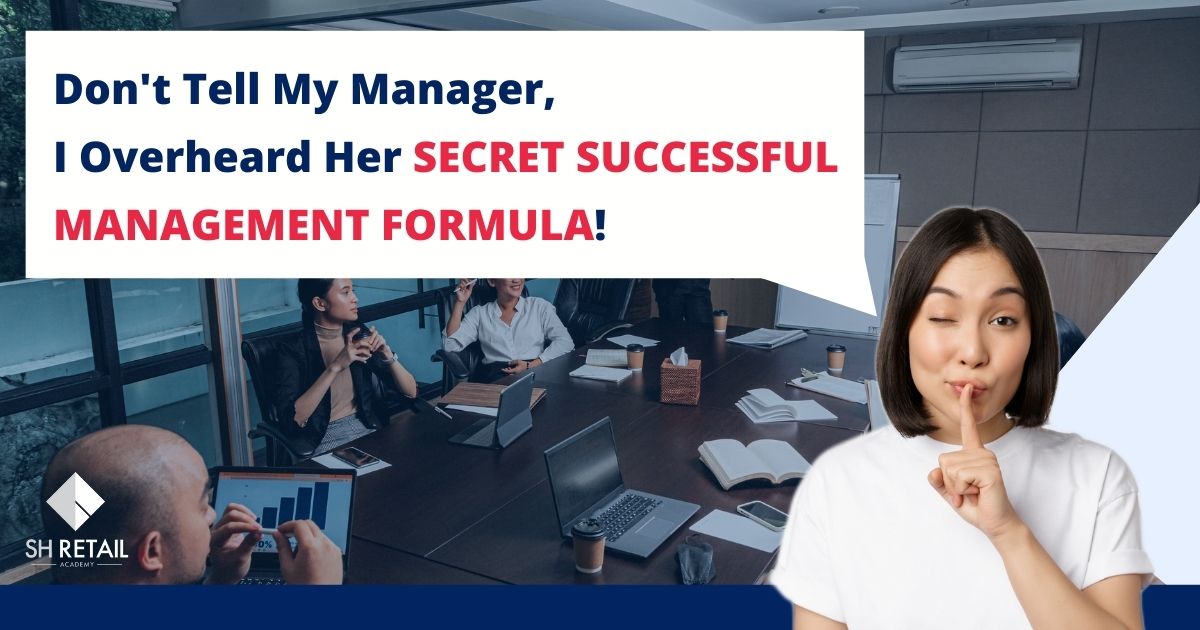
Don't Tell My Manager, I Overheard Her Secret Successful Management Formula!
Jun 13 / Lee Zi Quan
Ever wonder how some managers excel and stay at the top? Wondering how other managers can manage everything efficiently while we are busy everyday handling operational problems? Check out this article now to find out how you can be the manager you were
Executive Diploma Vs Diploma, Got Differences Meh?
Jun 07 / Lee Zi Quan
Want to upskill yourself, but unsure of the differences between diploma and executive diploma? You have come to the right place.
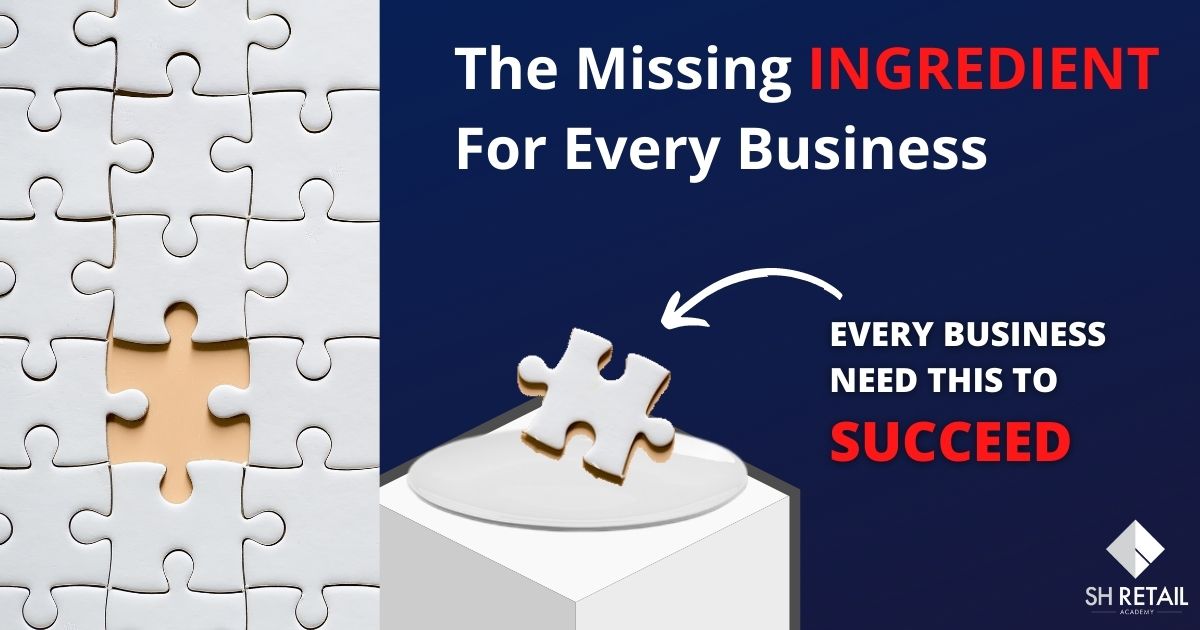
The Missing Ingredient For Every Business
May 24 / Lee Zi Quan
Most dishes comprises a combination of ingredients, and there is always an ingredient that draws out and elevate its flavor. Similarly, there is a magic ingredient for every business that makes it different than others. The truth is, it is visible to t
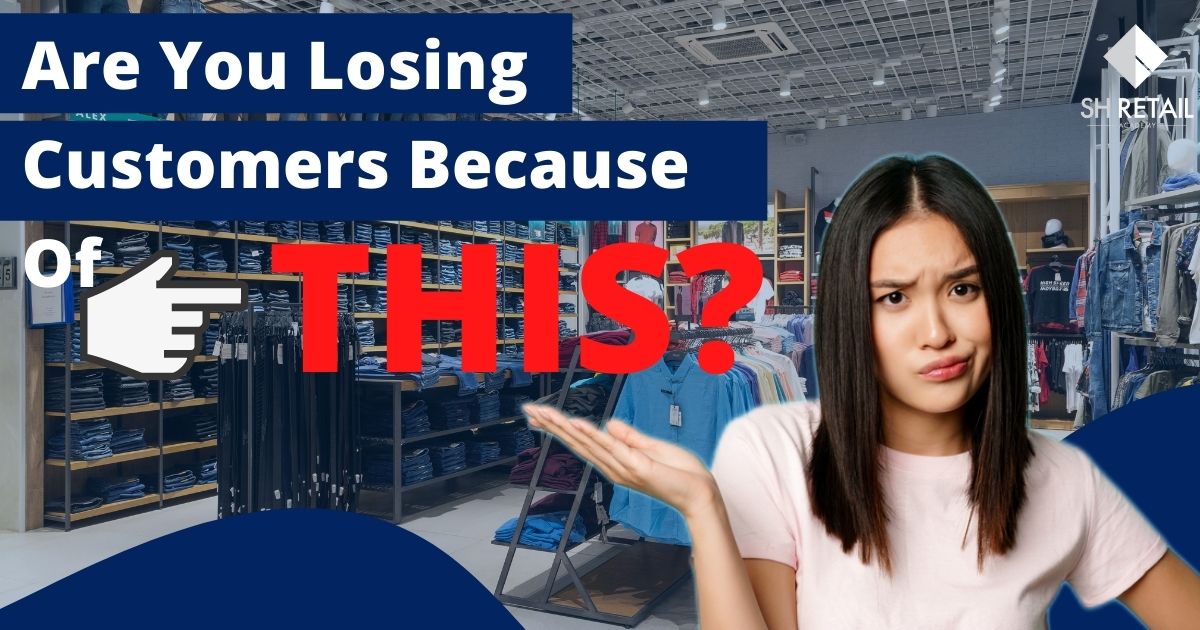
Are You Losing Customers Because Of This?
May 13 / Lee Zi Quan
The pandemic has shown us that customers have tons of options as well as platforms to purchase items and products. However, there is a more problematic, underlying issue that may cost you your customers!
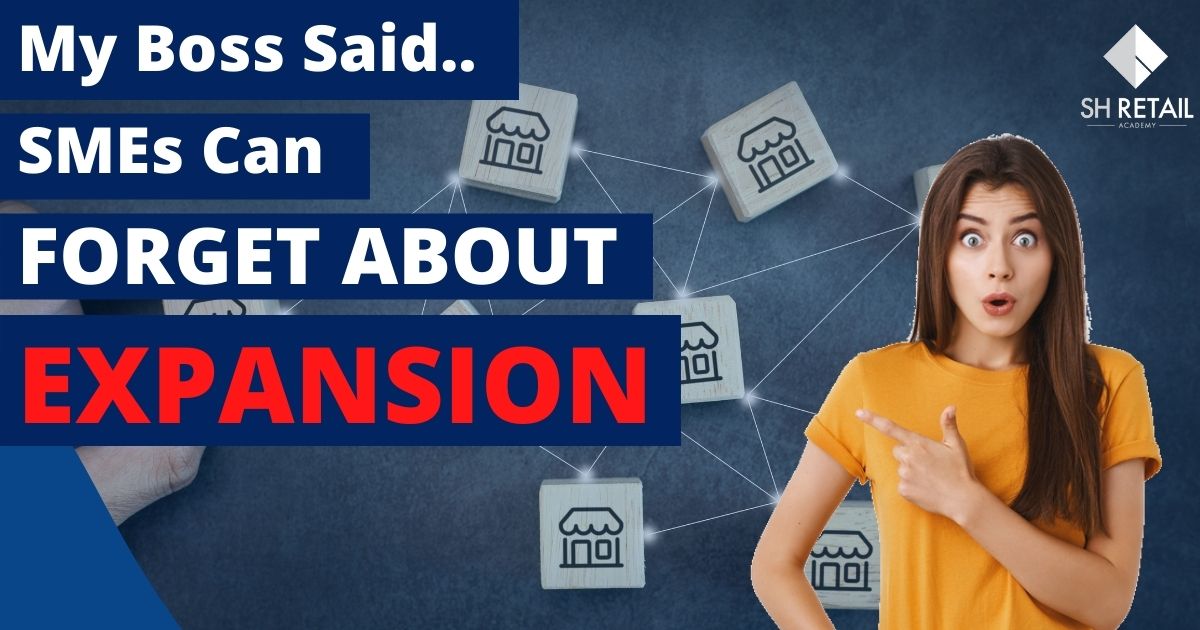
My Boss Said… SMEs Can Forget About Expansion
Apr 19 / Lee Zi Quan
When businesses think of getting more profit, the first thing that comes into their mind is expansion. But you know what? Business expansion may do more harm than good.
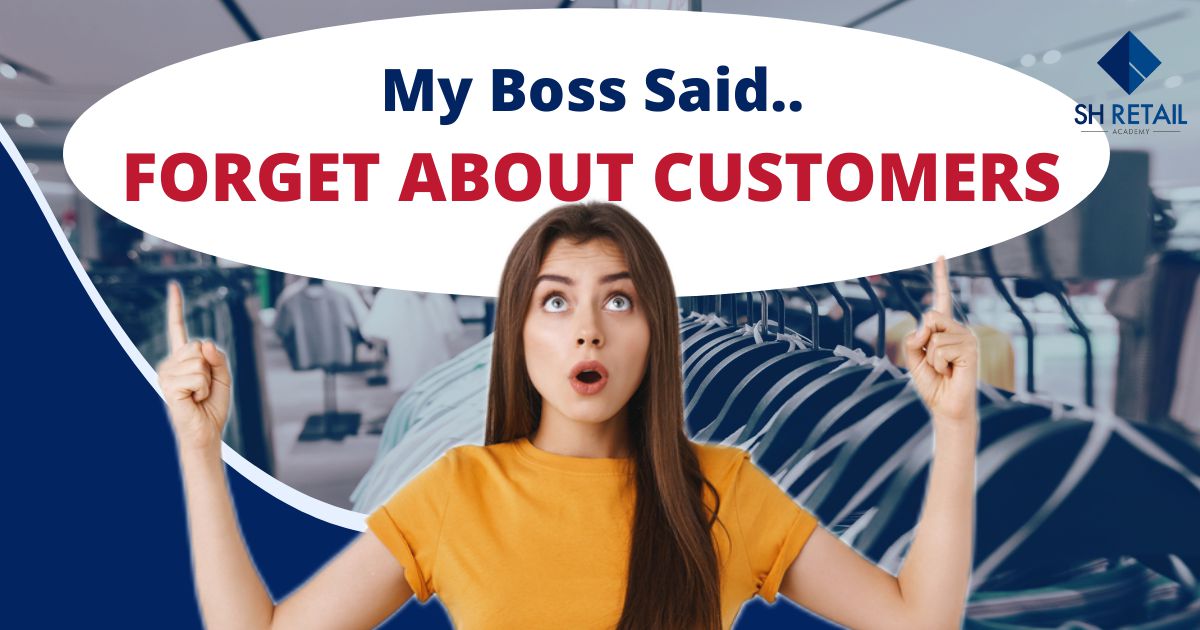
My Boss Said.. Forget About Customers
Mar 29 / Lee Zi Quan
In traditional retail, the term ‘customer is always right’ is widely accepted and praised. But in today’s context, it is rather debatable. Let’s take a look more at how digitalization of retail has changed many aspects of
.jpg)
Avoid These 3 Retail Mistakes That Can Ruin Your Business in 2022
Mar 04 / Lee Zi Quan
3 Retail Mistakes that could be Costing your Business Check out our article to identify and save your business from these mistakes today!
.png)
5 Ways To Overcome Rejection In Telemarketing
Feb 28 / Lee Zi Quan
Today's salesperson must develop the ability to withstand rejection and quickly rebuff it. Let's take a look at some telemarketing rejection strategies.
.jpg)
3 Learnings with My Recent Experience with Promoters
Feb 21 / Lee Zi Quan
Understanding the 3 key successful skills for promoters in 2022. Check out our article to better understand how you can train or become an excellent promoter today!
.jpg)
Where Do We Start In Personal Development
Feb 08 / Lee Zi Quan
Creating the Right Personal Development Goals for 2022 Check out our article to get a better idea of how you can begin this journey today!
.jpg)
3 Key Changes In People’s Expectations Towards Managers in 2022
Feb 03 / Lee Zi Quan
Leaders need to be aware of changing workplace trends. Let’s have a look are how people’s expectations towards managers have changed in these 3 aspects

Traditional VS Modern Training Need Analysis
Jan 25 / Lee Zi Quan
Are your business vision, missions and employees’ job description sufficient for you to determine the training programs for your employee? Read this article to find out the differences on Traditional VS Modern Training Needs Analys
How Retailers Can Upskill Relevant Skills Through HRD Corp
Jan 18 / Lee Zi Quan
Do your employees need upskilling in their job? Let’s find out how you can utilize HRD Corp for your employees’ training.
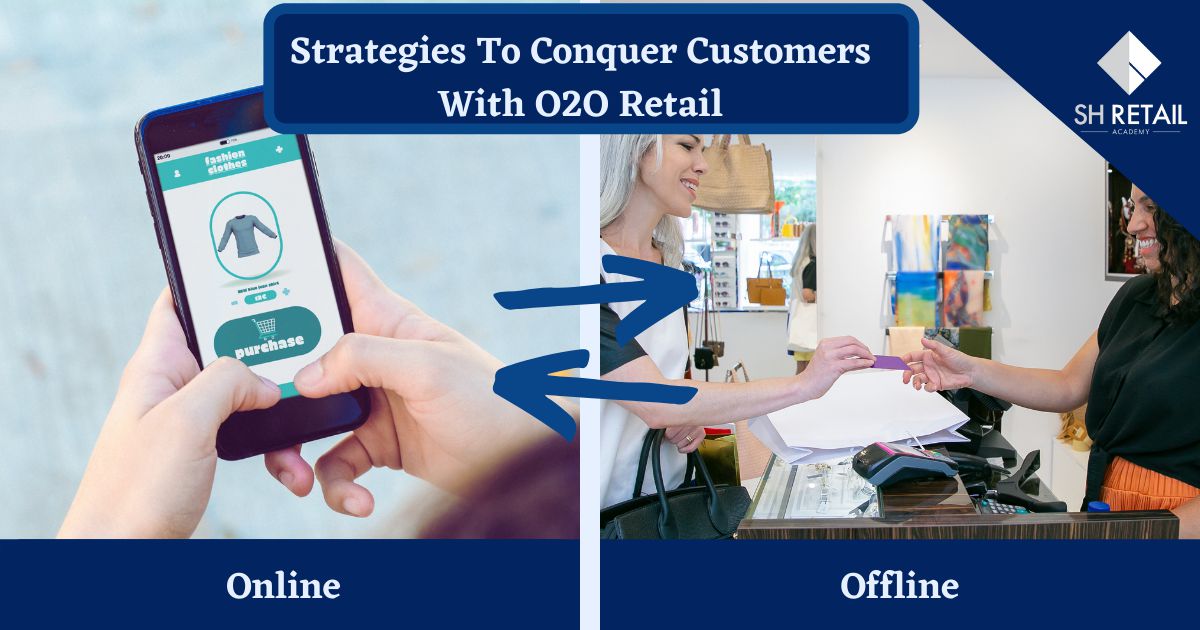
Strategies To Conquer Customers With O2O Retail
Dec 21 / Lee Zi Quan
These days, going traditional in retail is no longer the answer. By integrating both online and offline strategies, is the only answer to meet modern customers’ expectations.

5 Signs That You Have A Good Boss In 2021
Dec 07 / Lee Zi Quan
What differentiates a good boss vs a “meh” boss? Here are the 5 signs of a good boss that we all love to have in 2021.
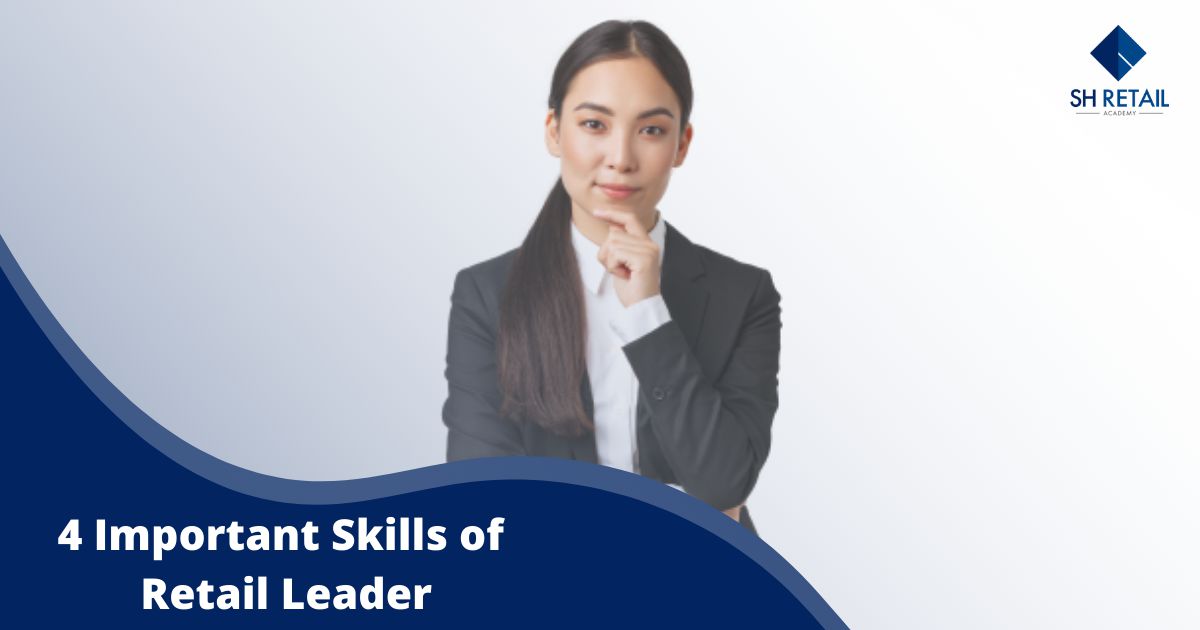
4 Important Skills Of Retail Leader
Nov 26 / WAN NURSYUHADA BINTI WAN MOHD ROZIHAS
In the face of a pandemic, strong retail capabilities are required to keep the business in its best light. Showing you the 4 must-have skills of a retail leader.&a
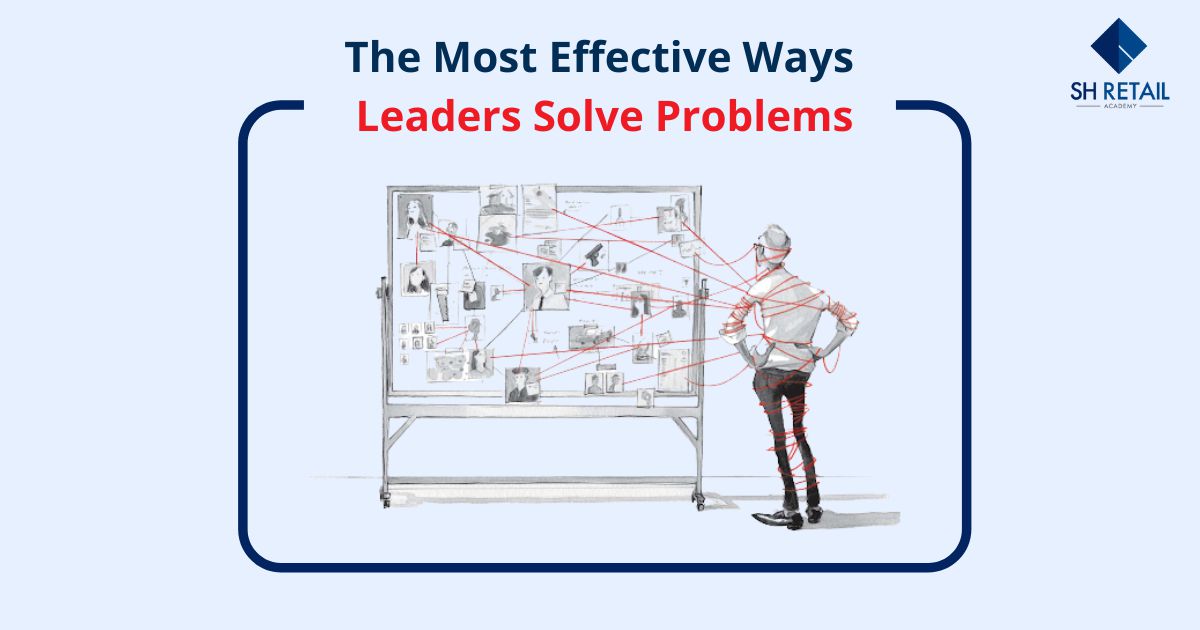
The Most Effective Ways Leaders Solve Problems
Nov 16 / WAN NURSYUHADA BINTI WAN MOHD ROZIHAS
With so many issues in our job and personal lives, it seems impossible to solve them all without encountering some difficulties. Let’s take a look at these 5
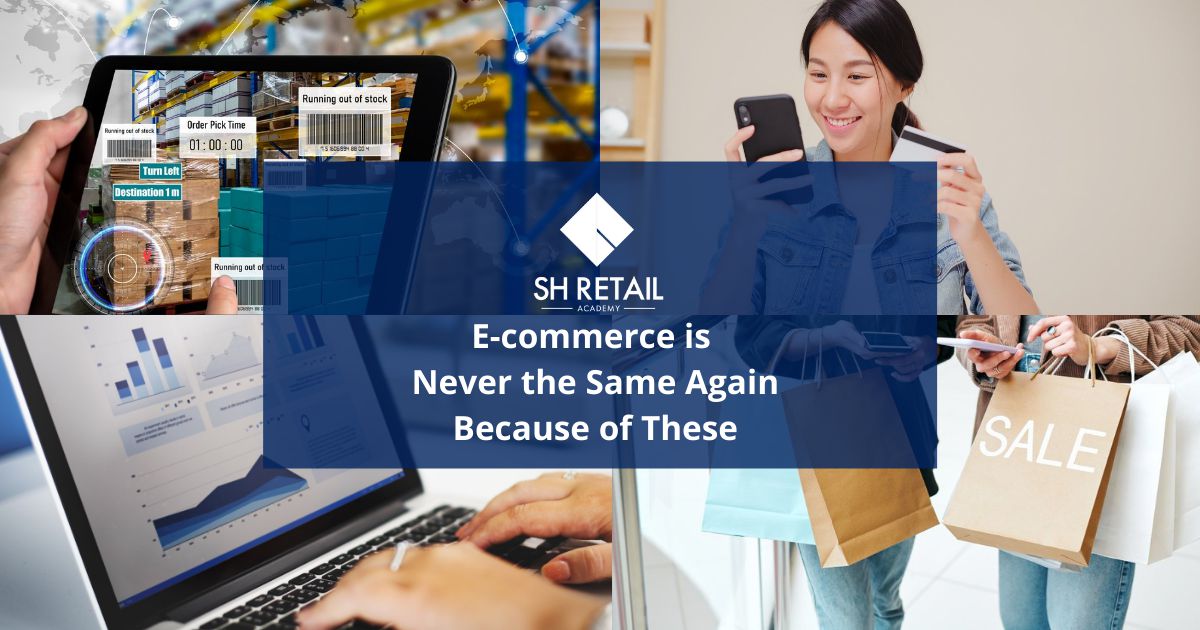
Here’s Why E-Commerce Will Never Be The Same Again
Oct 21 / WAN NURSYUHADA BINTI WAN MOHD ROZIHAS
The pandemic, combined with current digital evolutions, has permanently altered the online retail and e-commerce landscape for the better.

5 Biggest Retail Trends of 2021
Oct 12 / Lau Wen Peng
There are numerous trends to watch out for in 2021, here are five staple trends that may stay for the years to come.

Is Telemarketing Still a Relevant Source for Lead Generation?
Sep 17 / Lau Wen Peng
With the right techniques, telemarketing can still reliably generate more leads and customer loyalty.
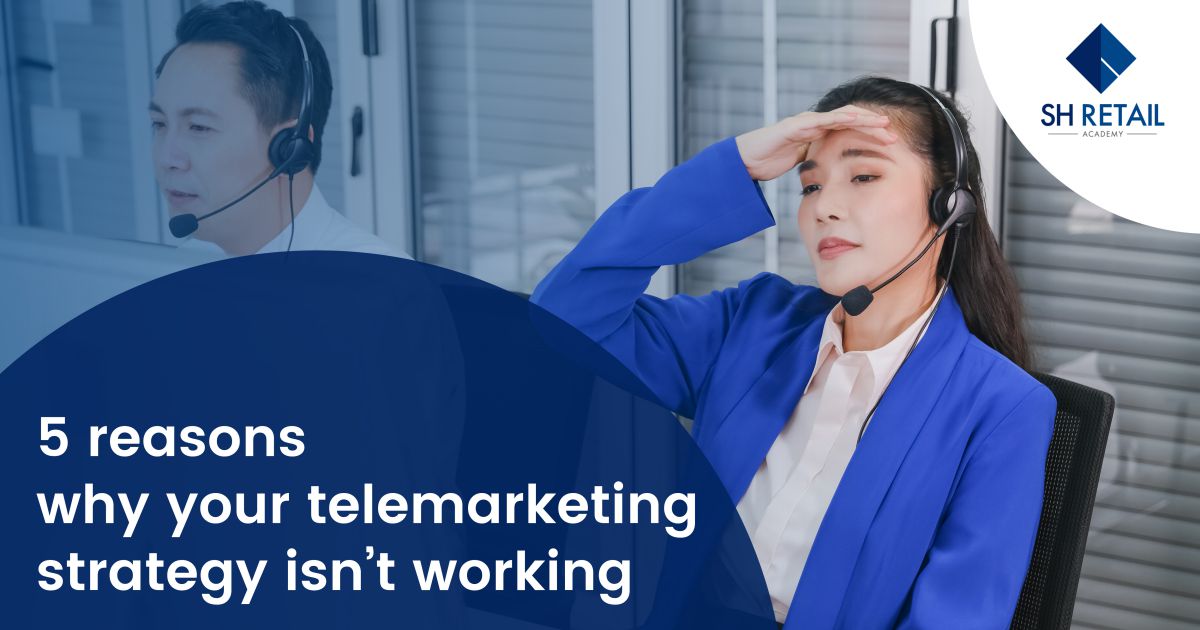
5 Reasons Why Your Telemarketing Strategy isn't Working.
Aug 27 / Charlotte Liew
Why isn't telemarketing bringing your desired results? Here are 5 factors that may be hindering its effectiveness.
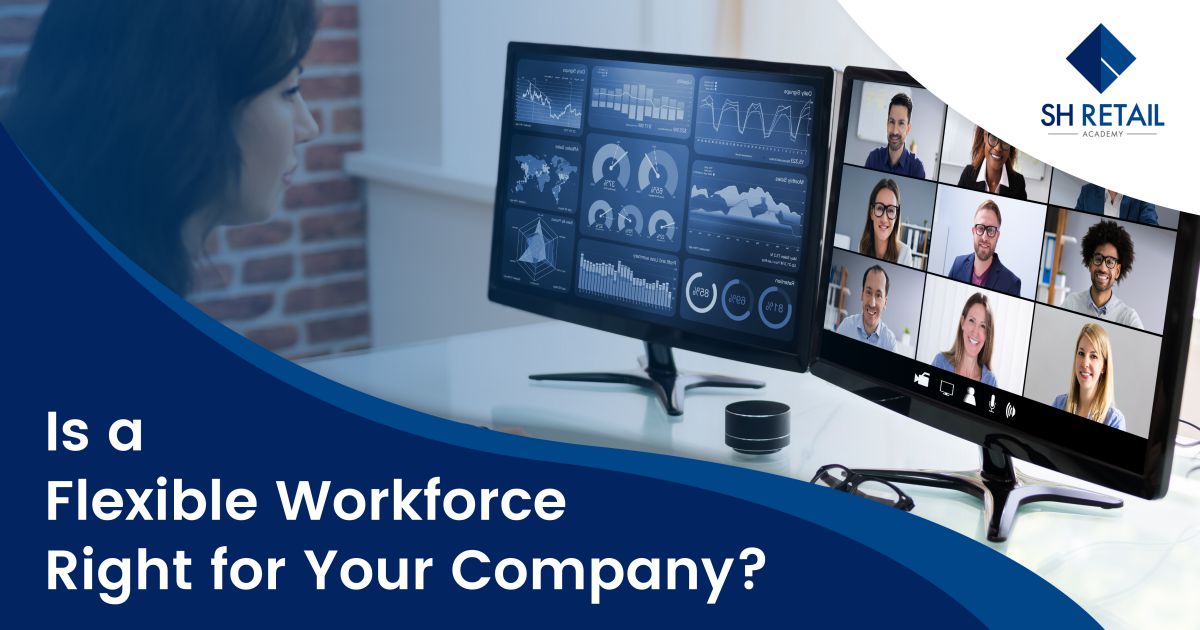
Is a Flexible Workforce Right for Your Company?
Aug 16 / Charlotte Liew
A flexible workforce not only meets the demands of both employers and employees, but also has the potential to add greater value to your business.
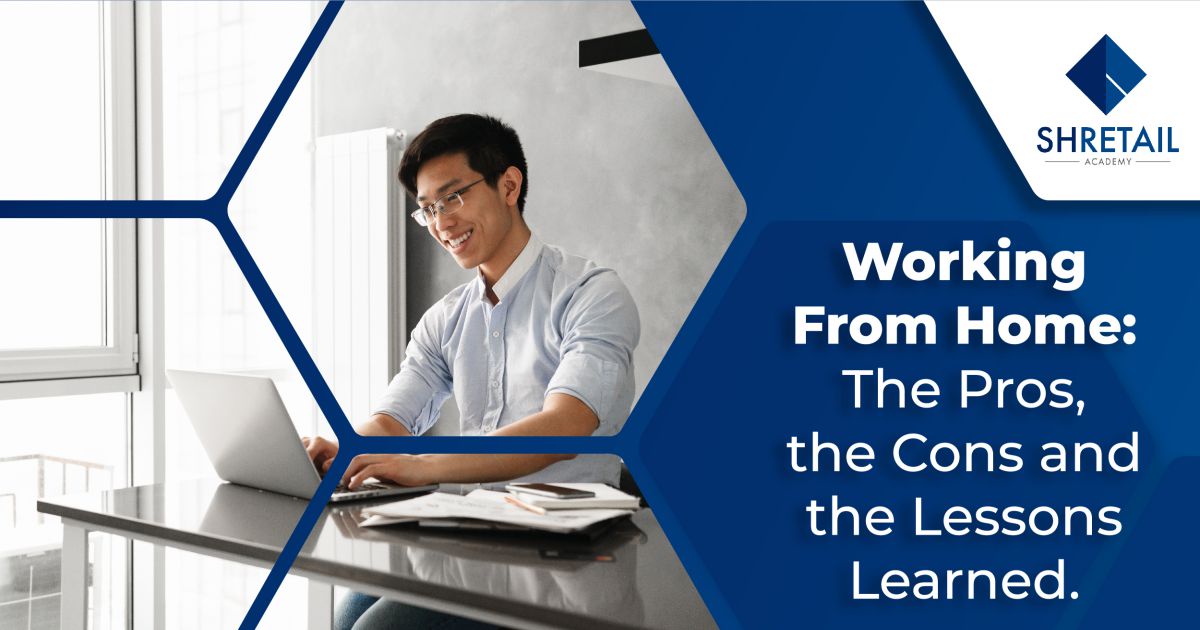
Working From Home: The Pros, the Cons and the Lessons Learned
Jul 23 / Charlotte Liew
Covid-19 has altered the way we function and interact at work. In this season of remote work, find out the good, the bad and everything in between.

Your Guide to Running Great Virtual Meetings
Jul 09 / Charlotte Liew
What does it take to run a great virtual meeting? Our latest guide explores 7 tips on how to host effective online meetings that keep the spark alive in your team - even virtually.
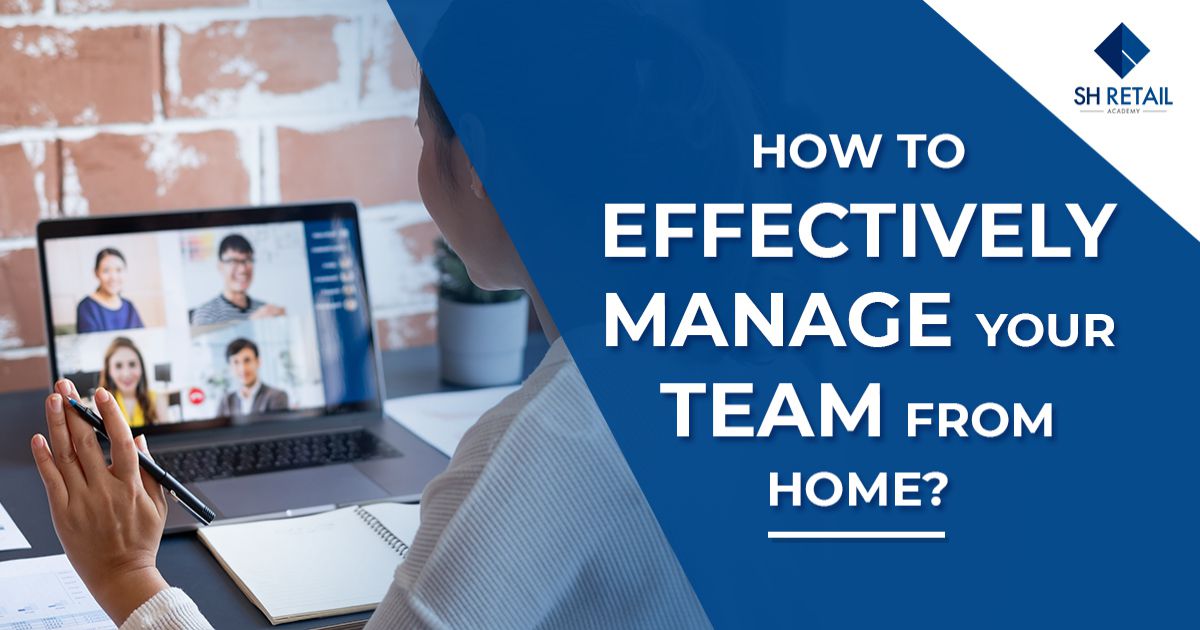
How To Effectively Manage Your Team From Home
Jun 25 / Charlotte Liew
Leading a team is tough enough in itself. How does one do it over Zoom? Here are our tips on how to better communicate with (and motivate!) your team - even from across borders.
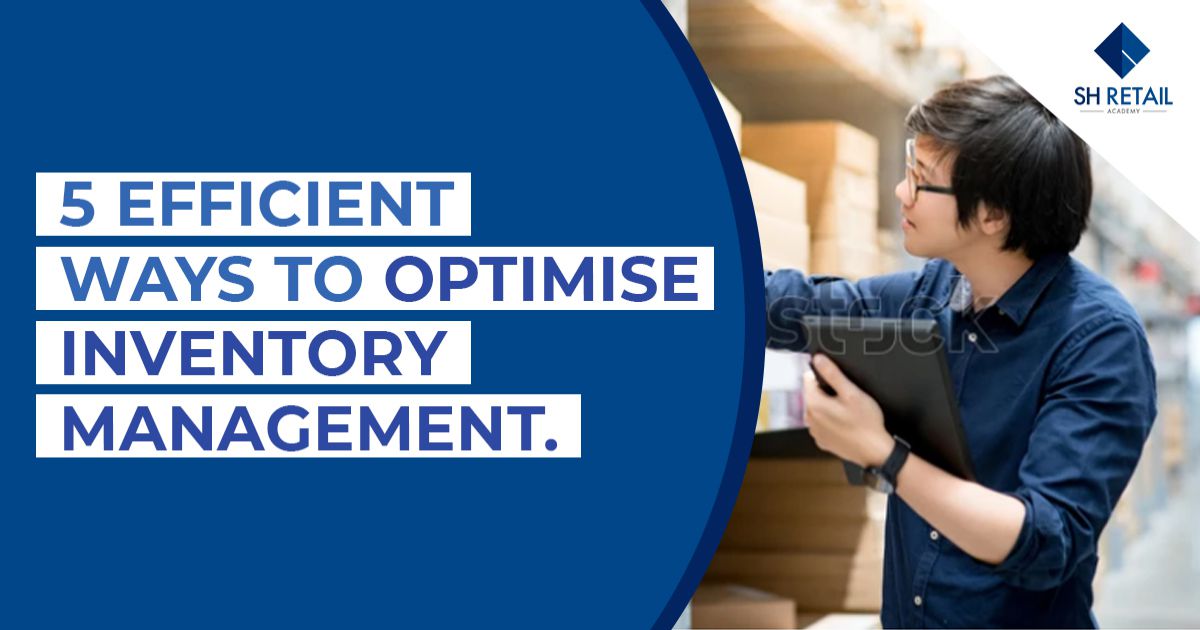
5 Efficient Ways to Optimise Inventory Management
Jun 11 / Charlotte Liew
As retailers, we hear buzzwords like “streamlining” and “optimisation” so often - but what actionable methods can we actually use?

How to Improve the Shopping Experience for Your Customers.
May 21 / Charlotte Liew
Shopping (offline or online) goes beyond just simply purchasing products that meet your needs or wants. The process of shopping plays a significant role in one’s overall impression, experience and loyalty towards a business.
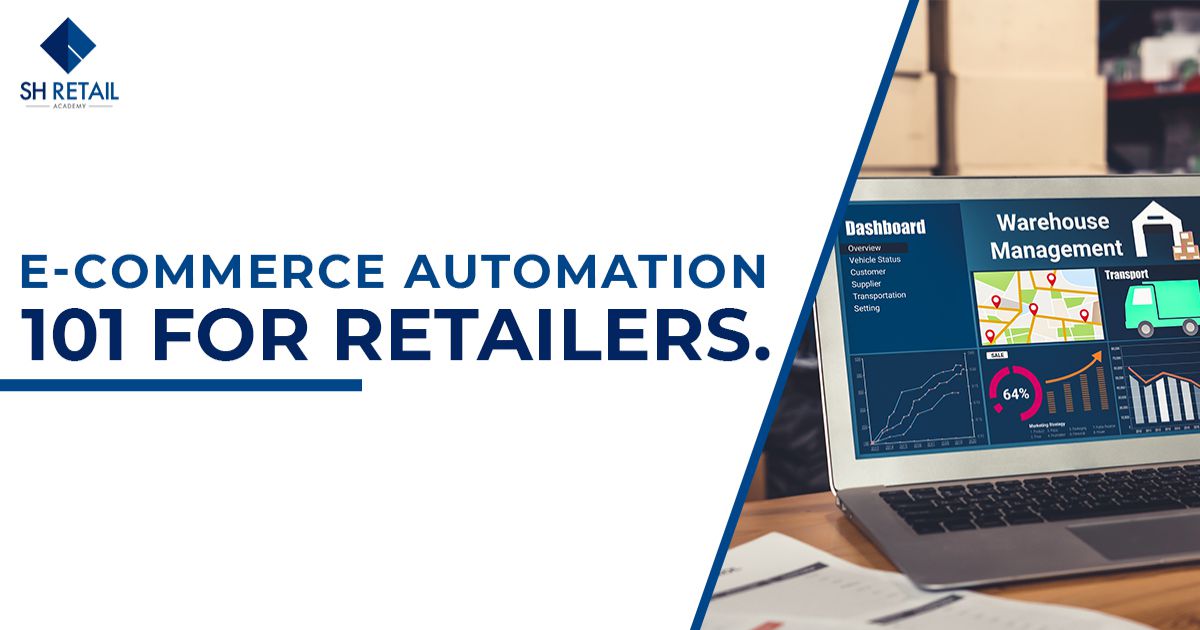
E-Commerce Automation 101 for Retailers
May 07 / Charlotte Liew
Automation plays a significant role in providing exceptional customer experience in retail. Here’s what e-commerce automation can do for you.
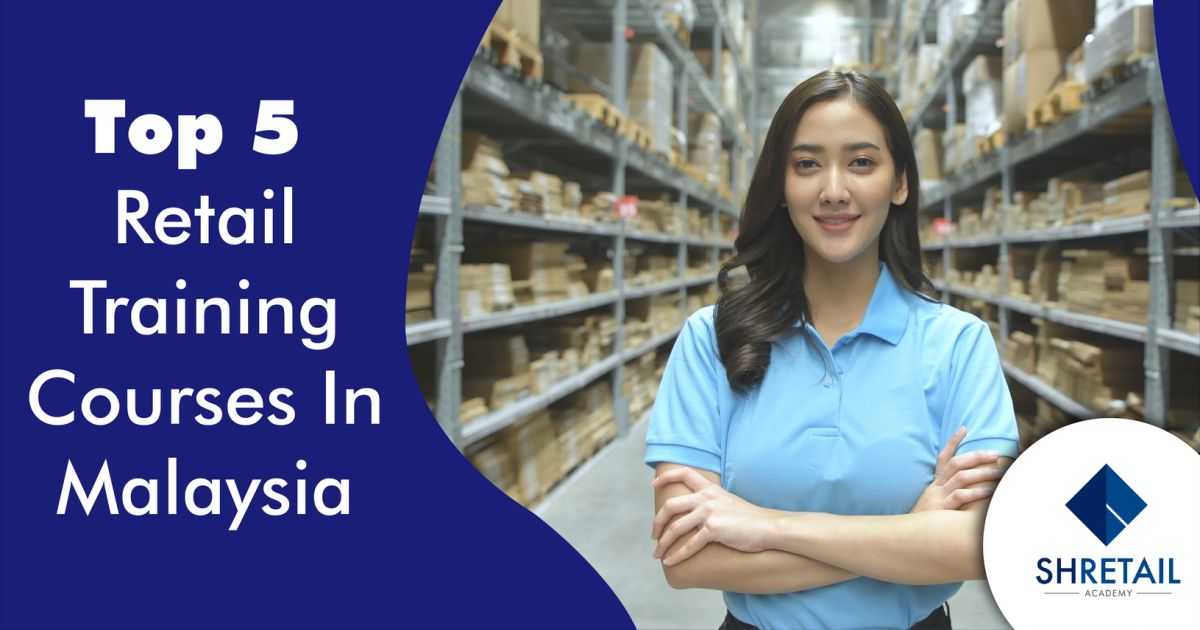
Top 5 Retail Training Courses in Malaysia
Apr 23 / Charlotte Liew
The best retail training courses will enrich your team and prove to be money well invested. Here are our top five retail training courses in Malaysia.
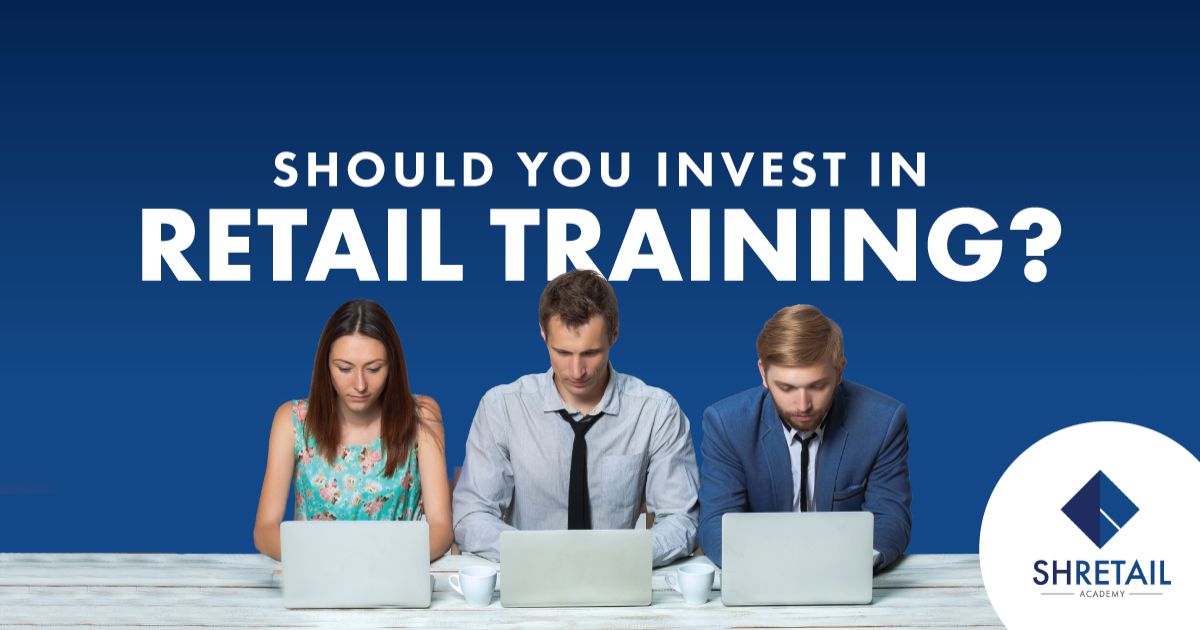
Should You Invest in Retail Training Programs?
Apr 09 / Charlotte Liew
Retail training programs are an investment that helps retain top talents within the company. Read more to find out if retail training programs are worth your Ringgit.

[New Retail + New Platform] Chapter 13- The Golden Decade
Mar 26 / Charlotte Liew
How many golden decades can a person have in a lifetime?

[New Retail + New Platform] Chapter 12- The Last Mile
Mar 12 / Charlotte Liew
In the retail industry, “the last mile” refers to the last leg of the supply chain journey, when goods reach their final home at the customer’s doorstep. Having discussed everything from the
.jpg)
[New Retail + New Platform] Chapter 11- Soros My Saviour
Feb 19 / Charlotte Liew
In Chapter 11 of New Retail + New Platform, Senheng’s Managing Director KH Lim gives us a personal peek into a turning point in his business - and his life. Ever wondered why Senheng places such strong emphasis on customer service? And what does George Soros have to do with any of it? The Man who Broke the Bank of England George Soros’ claim to fame was the day he raked in $1 billion dollars within a single day by short-selling the British pound. He then came to be known as “The Man who Broke the Bank of England” and is largely said to play a big role in the 1997 Asian Financial Crisis. For KH Lim however, Soros was his saviour. A reminder of rock bottom Like many young businessmen who chance upon their first fortune, Lim allowed the success to get over his head. “I gambled, played and was constantly accompanied by alcohol during that period. Looking back, it was really terrible. My colleagues and suppliers did warn me about the issues we had in the company but I did not pay attention – to me the company was making money so I continued to enjoy my life. If not for Soros, I would not have woken up in time, and Senheng as a whole would be gone and bankrupt within three years.” Lim recalled. The turning point came during one fateful morning in 1997. Out for his usual cup of tea, a newspaper headline which read “Financial Crisis Is Here” reminded him of the 1987 financial crisis which plummeted him to rock bottom. White rice and curry gravy to share Back then as a college graduate, Lim secured a sales job at an electrical appliance store where he worked for a mere seven months before being promoted to store manager. A few years later when the 1987 financial crisis hit, the store sadly had to close down - leaving Lim jobless during one of the toughest economic downturns of the century. “That was my first job, and I worked very hard at the time. But there was nothing I could do when the shop was closing down. I was penniless after I lost the job and went back to the rented room hoping my roommate could buy me a meal. But he was penniless too! Both of us had to turn our mattress over and search for dropped coins everywhere. Finally we found seventy cents and bought a pack of white rice with curry gravy to share. That was an unforgettable period.” Lim recalled. But fate had big things in mind for Lim, and he soon found another job at another electrical appliances shop. WANTED: Problematic employees The bold headline brought Lim back to his past, and made him wonder about his business. How would Senheng fare in the face of a recession? That was enough to jolt Lim to his senses and set him on a path towards tightening his reins on the company. After discussing with his department heads, Lim found that every department from logistics to procurement to HR were filled with hidden issues. In total, there were 100 problems discovered within the company. The biggest issue which stood out were customer service complaints, with everything from product negligence to poor after-sales delivery being brought up as an issue. Lim came up with a creative (and extremely effective!) way to improve customer service - a “WANTED” poster. The poster encouraged customers to report directly to Lim’s office line if they had an unpleasant experience with any Senheng employee. In return, the customer would receive an RM100 Senheng voucher, cut directly from the said employee’s paycheck! For Lim, it was Soros and the newspaper headline that saved Senheng. Now, he dedicates an entire chapter in his book New Retail + New Platform to the public, in hopes it may enlighten those who are just as lost as he once was.
.jpg)
[New Retail + New Platform] Chapter 10- New Platforms
Feb 04 / Charlotte Liew
In the 90s and early 2000s, businesses faced the problem of insufficient solutions. In contrast today, we are facing a very different problem - too many solutions. Softwares, tools, and platforms are abound everywhere we look. For one, they’re either extremely specialised, or promise to serve as an “all-in-one solution”. Which platforms are worth it, and which do businesses really need? In Chapter 10 of New Retail + New Platform, we explore Senheng’s top 12 management platforms which have been integral in helping Senheng improve its performance. Senheng’s Top 12 Management System Platforms. Net Promoter Score (NPS) Management Platform Auto-Replenishment Platform Business-to-Business (B2B) Platform E-Product List Platform Product Information Management (PIM) Platform Unified Price Tag Management Portal Platform Service Portal Platform E-Market Price Survey Portal Platform Operation Performance Portal Platform Trade-in Portal Platform Warehouse Management System (WMS) Platform Central Distribution Management (CDM) Platform Net Promoter Score (NPS) Management Platform The NPS Platform tracks word-of-mouth among Senheng’s customers. Through this system, customers interact with the company via the Senheng app after each purchase. Surveys help Senheng track which purchases are made as a result of recommendations. Thanks to this system, Senheng managed to collect key insights such as: more than 16,000 customers obtained recommendation through word-of-mouth from family and friends additional warranty, attractive promotions and ‘good customer service are the top three reasons for recommendation Most first-time purchasers know about Senheng from word of mouth Auto-Replenishment Platform Inventory is one area which greatly benefits from using the right platforms. Senheng’s auto-replenishment platform ensures sufficient stock at headquarters and warehouses to fill the daily needs of all branches. This system divides products and models into four groups, namely: Fast Moving - items which contribute 90 percent of sales Slow Moving – items which contribute 10 percent of sales Long Tail – only minimal quantities sold Zero Moving – zero sales in the past ten days Business-to-Business (B2B) Platform Senheng’s paperless B2B platform simplifies the ordering process between the company and its business partners. To give you a better idea, among the system’s abilities include sending purchase orders to suppliers on a daily basis for delivery according to the orders sent. As a whole, it replaces the inefficient manual system to one that is done paperless, and with seamless tracking mechanisms to eliminate misplacement, loss and damage. E-Product List Platform E-Product List stands for electronic product listing. This platform allows suppliers to upload new product information and details (product name, model, code etc.) directly to the company’s purchasing team for selection and review before issuing PO. This greatly simplifies the purchasing process - for both Senheng and their suppliers. Product Information Management (PIM) Platform As a retailer (especially one of Senheng’s scale), managing your products can be tough. Prices change, and promotions are constantly happening. Senheng’s PIM Platform is a centralised and automated system which automatically updates the information onto the e-commerce platforms. Unified Price Tag Management Portal Platform This system was internally designed to standardise the price tag format across all outlets and products. With so many promotions happening at once, this system ensures that the brand image is standardised both online and offline. Service Portal Platform At Senheng, after-sales service is just as important as pre-sales. The Service Portal Platform helps monitor customers’ repair orders, making it easier to track, check and follow up on the latest status of product maintenance. Thanks to this, staff are able to take immediate action - and customers leave happier than they were before. E-Market Price Survey Portal Platform This platform solves one of the most important questions that retailers face day in and day out: Are my products priced correctly compared to the current market rate? The E-Market Price Survey Portal uses artificial intelligence to monitor current product prices across all relevant markets and analyses the latest price trends. Any poorly priced products can then be quickly identified and sent for immediate repricing. Operation Performance Portal Platform This platform will be of particular interest to regional managers. After all, it’s designed with them in mind. The Operation Performance Portal Platform served as a performance evaluation system that allows regional managers to monitor the performance of each branch. Likewise, regional performance can also be monitored by the headquarters via this platform. With the data gleaned from this system, the business is able to determine changes and new directions based on the results provided to ultimately improve operational efficiency. Trade-in Portal Platform Unlike many retailers, Senheng provides a trade-in service where customers can bring in their old devices that are in good condition to be offered as trade-in by Senheng. In general, trade-in services is prone to have problems such as inaccurate quotations, often times due to inaccurate description of product condition. The trade-in portal specifically helps the company reduce overestimation by providing monthly trade-in prices and requesting product images before a price estimation is given to the customers. Warehouse Management System (WMS) Platform WMS platforms are key to daily operational efficiency. When suppliers enter their delivery order into the B2B system, the system immediately updates the details of the delivery. After receiving the delivery information, the warehouses are able to arrange manpower efficiently and accurately. Central Distribution Management (CDM) Platform Another key platform within the logistics department is the CDM platform. Since 2018, this platform has helped the company with fast and accurate product deliveries, ensuring all goods are fulfilled automatically and at the most efficient stock level possible. Thanks to the CDM platform, goods are delivered to eleven regional logistics centres across the country within a specific time window, while regional logistics centres are able to arrange for swift delivery to branches. Find out how else Senheng utilises technology to its advantage in Chapter 8, or explore the New Retail side of the story.

[New Retail + New Platform] Chapter 9- Marketing Innovation
Jan 14 / Charlotte Liew
Senheng approaches marketing like no other in the industry. Rather than simply focusing on price-oriented sales campaigns to customers, Senheng’s marketing strategies encourage the in-built desire to shop in customers. With this in mind, the company has a clear view on what type of marketing strategies to adopt. Customers on the other hand, keenly anticipate such campaigns rather than feeling “sold to.” Let’s take a look at some of Senheng’s most loved marketing campaigns, and why they work. Senheng’s most loved campaigns of 2018. Senheng 29th Anniversary Campaign. The much anticipated Senheng Anniversary Campaign is a key highlight for Senheng PlusOne card members. During this campaign, the company presented a total of RM10 million worth of vouchers up for grabs, with ten of the latest and most sought-after smartphone models to be won in lucky draws too. Shake! Shake! Shake! For Ang Pow. Chinese New Year presents one of the best opportunities for companies to make memorable marketing campaigns. One of Senheng’s 2018 highlights was the “Shake! Shake! Shake! For Ang Pow” event. Customers enjoyed a fun lucky draw-esque activity where customers shake their mobile phones to receive digital ang pows. In total, Senheng distributed 88,888 ang pows with a cash voucher of RM50 in each. World Cup “Football Time” Event. The World Cup event in 2018 was an exciting period for sports fans around the world. With football being a particular sport of interest for many Malaysians, Senheng launched the “Football Time” themed event, giving away four Ferrari footballs to Senheng customers who spent a minimum amount in-store. “Jurassic World” Free Trip to Hawaii. With the iconic release of Hollywood blockbuster Jurassic World: Fallen Kingdom, Senheng held a special promotion for movie fans, sending ten lucky customers to the actual filming location in Hawaii! On top of this, customers could also win free passes to screenings of the movie. AEON Easy Payment Scheme Free Petrol Vouchers. Senheng also made their mark during 2018’s Hari Raya festivities. During this campaign, Senheng rewarded customers who pay through AEON Easy Payment Scheme with free petrol vouchers. This was the first of its kind give-away among the home appliances retailers and it was extremely popular. All Inclusive Marketing Plans Marketing campaigns from a CSR viewpoint. If you’ve followed along with us in our seventh chapter of New Retail + New Platform, you’d know about Senheng’s CSR initiatives across the past two decades. Two birds can be killed with one stone when companies utilise CSR campaigns for the marketing opportunities they present. Some of Senheng’s most memorable CSR marketing campaigns include: “I Love Panda” sponsorship I Plant A Tree with WWF Title sponsorship of the Malaysia Purple League Joint collaboration marketing campaigns. Why be selfish when it comes to your marketing strategies? Senheng is a huge proponent of joint collaborations, which help to promote business partnerships with suppliers, financial institutions and other organizations. One example is the PlusOne Citi loyalty program, which successfully recruited nearly 9,000 new PlusOne Citi members. The PlusOne Member Carnival is another event held three times a year, providing members with attractive rewards through PlusOne points. Stay traditional, or go digital? In 2018, Senheng’s advertising budget amounted to a whopping RM10 million. This budget was distributed across various channels including print media, TV stations, radio, in-store advertising and of course - social media. Seamless usage of both traditional and digital media is a key aspect not to be overlooked. In two surveys conducted by Senheng, customers’ most preferred communication channel from mid-2018 to mid-2019 changed from email to the Senheng app. The popularity of Senheng’s app increased 44.2% within a year’s time! Other strategies used by Senheng to test the impact of their digital marketing efforts include: Product promotion via Facebook’s digital advertising links. Usage of Facebook’s location-based marketing to lead customers to nearby Senheng stores. E-commerce and in-store surveys to glean consumer sentiments on recent marketing and advertising campaigns. With this in mind, companies should understand that planning and executing marketing strategies may set the ball rolling - but clever studying and interpretation is ultimately the key to marketing innovation. Fast forward to 2020, Senheng has completely cut traditional media from its marketing channels, fully investing into digital marketing

[New Retail + New Platform] Chapter 8- Technology Innovation
Dec 30 / Charlotte Liew
For a company that was established in the 80s, Senheng remarkably manages to stay on the forefront of the latest technological advancements. As the Founder and Chairman of Senheng Lim Kim Heng puts it: “embrace it or be left behind”. In Chapter 8 of New Retail + New Platform, we get a glimpse of how Malaysia’s largest consumer electronics chain stays relevant with the rapid flow of technological change. By embedding technology into the retail scene. The retail industry, perhaps more so than many other industries, is largely led by technology. The easiest way to visualise its role is to think of how you pay for in-store purchases nowadays - the contact-free option to pay cashless has become the default option for most. But hold on! For more complicated, elaborate technologies such as Big Data or CDP, it doesn’t mean you have to incorporate every tech update just because your competitors have done so. Lim cautions retailers to consider wisely if the new tech will be worth the investment, and how well it will incorporate into the current systems. Deloitte and Ali Research Institute together have published a study on the “Six Major Changes in Science and Technology Reshaping the Retail Industry”. Retailers can use these six key points below as a basis for what to keep an eye out for. 1. Comprehensively data driven Mastering the art of gathering, analysing and utilising data to optimise the entire value chain. 2. Popularisation of A.I. A.I related technologies will be more prominent in the retail sector. 3. Cost reduction and efficiency On demand cloud computing helps retailers immensely in analysing and collecting data - at low cost, time and labour. 4. In-depth integration The demand and complexity of the marketplace may call for intensive coordination and integration of multiple technologies 5. Popularisation of applications As technology continues on its upward journey, the maturity of today’s applications will only grow, along with the diversity of available applications. 6. Rapid convergence of innovation Enterprise empowerment aside, technology is also reshaping the structure of management and its resources. Utilizing Business Intelligence. Senheng’s Business Intelligence (BI) system is one of the company’s biggest pride and joy. Despite the costly and time-consuming efforts involved in setting it up, the system has yielded many fruits for the company. The BI system that Senheng adopted covers analytics such: sales performance inventory management staff ratings freight planning automatic replenishment Since 2004, the BI system has provided the company with valuable data to make the right decisions - propelling them year beyond their peers and onto the same playing field as international giants. By embracing the O2O concept. Brick-and-mortar or e-commerce? Given the choice to focus on just one, which avenue do you think would be more productive? But why would you choose one when incorporating both is a completely viable business strategy? The O2O concept stands for Online-to-Offline retail. This strategy aims to utilise online marketing efforts to draw customers’ in-store to make physical purchases. This way, traditional brick-and-mortar businesses can benefit from an added “online” component, while e-commerce companies can establish a physical space of their own. Amazon.Go, Alibaba Hema Grocery, JD.com, 7FRESH, Tmall, and Suning are just a few examples of online companies which by going offline as well, have embraced the O2O concept. Closer to home, Senheng is one of the first Malaysian retailers to embrace the O2O concept in Malaysia. By synchronising online and offline marketing efforts. To support the O2O concept, the Senheng team had to get creative with their marketing and advertising - and get creative they did! Comparing Q1 2017 to Q1 2018, Senheng’s conversion rate from Facebook advertising alone increased from 0.22% to 0.37%. The actual revenue increased from RM52,000 to RM160,000. The company continued its uphill trajectory with Q2, when the conversion rate increased from 0.18% to 0.32%, while the revenue went from RM66,000 to RM188,000! A few ways Senheng did this is by: Using data from Facebook to map the correlation between online and offline consumption Using Facebook’s location tracking function to convert foot traffic into sales of specific branches Formulated relevant advertising strategies based on real-time weather and temperature data (pushing water heaters in rainy areas, and air purifiers during hazy weather etc.

[New Retail + New Platform] Chapter 7- Corporate Social Responsibility
Dec 11 / Charlotte Liew
“Return to the society what you’ve taken from it” Translated from a Chinese proverb, this saying captures the essence of what CSR is really about - not just bolstering the corporation’s reputation, but also establishing a compassionate company culture and attracting like-minded talents. In Chapter 6 of New Retail + New Platform, we got a taste of how Senheng’s company culture enthusiastically nurtures all employees’ personal growth and successes. This same enthusiasm can be seen in how the company gives back to the community. This time around, let’s take a look at Chapter 7 to discover some of Senheng’s CSR initiatives over the past two decades. Senheng’s CSR Programs Over the Years 1. Environmental Responsibility 2003: The Launch of Biodegradable Plastics. Senheng replaces all non-biodegradable plastic bags that had previously been in use to biodegradable plastic bags across all outlets. 2009: The Launch of Eco-Friendly Bags. Following the switch from non-biodegradable to biodegradable plastic bags, Senheng launched a recyclable eco-friendly carrier bag to further promote environmental awareness among shoppers. 2010: I Plant A Tree Project. In collaboration with the Malaysian Wildlife Society (WWF), Senheng launched a tree planting project in the forests of northern Ulu Segama, Sabah. The big picture was to protect the local wildlife in the area. For every inverter air conditioner sold at any Senheng outlet, a tree would be planted in the northern forest of Segama. Compared to non-inverter air conditioners, inverter air conditioners prevent wasteful energy consumption and are up to 30 - 50% more energy-efficient. This program successfully covered 46 hectares of forest, with a total of 7,700 trees planted. 2013: Electronic Waste Recycling Program. As Malaysia’s largest electronics retailer, Senheng takes the issue of e-waste seriously. Together with the Malaysian Department of Environment, Senheng has assisted our government in setting a clear direction and policy in formulating long-term plans for e-waste management. Electronic waste collection bins have also been placed in Senheng outlets nationwide. 2014: “I Love Panda” Sponsorship Activities. Remember Xing Xing and Liang Liang? When the two pandas were sent from China to celebrate the 40th anniversary of diplomatic relations between Malaysia and China, Senheng began donating RM500,000 per year for two consecutive years to the National Zoo. 2. Youth, Sports and Education 2000: Orphans Adoption Program. 20 years ago, Senheng’s first CSR initiative involved working with Hope House to promote the orphan adoption program, sponsoring the full living and education expenses for 57 orphans for three years. 2010 - 2016: Senheng-Samsung SS Junior Badminton Scholarship. Over the years, Senheng has made a significant impact in nurturing young badminton talents in Malaysia. One of the most notable would be the Senheng-Samsung SS Junior Badminton Scholarship, which was listed in the Malaysian Book of Records and became the most popular badminton event for athletes. Young talents discovered through the Senheng-Samsung Junior Badminton Tournament were shortlisted and fully supported in terms of not only full-time professional training, but also education and accomodation fees. Together with Samsung, the company pledged RM1.5 million per year for six consecutive years to sponsor young badminton talents. Today, there are more than five national players in the Malaysian national team who were recruited from the SS Junior Badminton Scholarship Program. 2012: “Standards for Being a Good Student and Child” (Di Zi Gui) Project. Most Malaysian Chinese will be familiar with the book“Standards for Being a Good Student and Child”, which speaks of values such as good social conduct and filial piety. Senheng believes in moral education just as much as academic education. The company’s initiatives under this program include a talk on filial piety and family values at the Plenary Theatre in Kuala Lumpur Convention Center. Well-known publisher and writer Poh Seng Titt also held a series of related activities and a five-hour talk on the book for the company’s own employees. Senheng also partnered with Ai FM to sponsor the “Standards for Being a Good Student and Child” radio program. 2019: The Launch of the New Senheng Education Assistance (SEA) Program. Just last year, Senheng launched the Senheng Education Assistance Program (SEA) to help poor students with excellent academic results to pursue their dreams. The program sponsors 20 students per year with RM20,000 each to pursue their chosen academic program. 3. Economic and Ethical Responsibility 2008: Raised RM202,898 for Sichuan Earthquake Victims. In the wake of the tragic magnitude 8 earthquake that devastated Sichuan, Senheng in partnership with Sin Chew Daily launched a fundraising effort. The program successfully raised RM202,898 from customers and employees. 2018: Donation of RM1 million to Hope Fund. Strongly believing that citizens should faithfully contribute to the country, Senheng’s Managing Director Lim Kim Heng donated RM1 million to Malaysia’s Hope Fund (Tabung Harapan Malaysia) when it was first established. Make space for CSR in your company. In today’s highly competitive business world, compassion always pays off. Be it in business or our personal lives, what one puts out into the world will be returned with equal magnitude. If you’re having trouble deciding on a worthy cause for your company’s CSR initiatives, take inspiration from Senheng’s CSR stories!

[New Retail + New Platform] Chapter 6- Franchise
Nov 25 / Charlotte Liew
What would a company be without its employees? As the Founder and Managing Director of Senheng, Lim takes human capital seriously. You’d be hard pressed to find a leader who invests as much into his employees - from sponsoring Masters’ degrees to learning trips worldwide. In Chapter 6 of New Retail + New Platform, we explore how Senheng’s franchise system expands not just the company alone, but the team as a whole. Franchising for employee entrepreneurship. Since 2015, the Senheng Franchise Academy has successfully created more than 23 millionaires with an accumulated profit of RM67 million. But before the success of the Senheng Franchise Academy present today, the program had undergone much reviewing, refining and relaunching. In its first stages in 1995, the program was called the “Staff Franchise Program”. Applicants were guaranteed RM36,000 profit - but response was low. Just 6 years later, the program was relaunched with four franchise shops. This sparked more interest from employees, but concerns such as financial support continued to dissuade them. In 2003, a new franchise model was launched – “Franchise – A Scheme”. This program gave store managers the opportunity to compete via sales targets for the chance to choose a Senheng outlet out of the 115 available at the time as their startup store. On top of that, the winner would also receive an interest-free RM20,000 loan and the right to select store employees as he or she wished. So, what was the turning point which led to the Senheng Franchise Academy? Lim came to the realisation that preparation and guidance was the missing key. Thus, the Senheng Franchise Academy was launched in 2015 to guide Senheng staff to embark on their own entrepreneurial journey. Through the program, candidates go through several stages before being qualified to call an outlet their own. Candidates are guided on sales techniques and procedures Undergo store manager training program Assume the role of a store manager Two years of experience and fulfillment of monthly KPI Learning to manage expenses in a Senheng franchised outlet Qualified to own a Senheng franchise outlet! Be the supporting pillar for your staff. Senheng offers the support that franchisees need in terms of: Before sales (by HQ) 1. Product Merchandising 2. Advertising & Promotions 3. HR and Training 4. Finance and Accounts 5. IT & Business Solutions 6. CRM and Loyalty Program During sales (by Franchisees) 1. Display and cleanliness 2. Auto replenishment system and management of inventory safety level 3. Staffs discipline monitoring 4. On-the-job staff coaching 5. Customer service handling 6. Price tag update and Point of Purchase (POP) update After sales (by HQ) 1. Warehouse 2. Logistics 3. Home delivery & installation 4. Repair & service How about outside of the franchise program? Senheng also organises business study visits for their team locally and abroad such as China, Taiwan, South Korea, Japan. The company provides training for over 3,600 employees per year. In 2018, Lim even took a team of 30 employees to the headquarters of Alibaba in Hangzhou, China to learn from the best - an investment costing RM12,000 for each participating employee. Senheng staff also have the opportunity to learn from various international courses such as the Executive Business Management (EMBA) program, Management Training Program (MTP) from Taiwan and the Advanced Retail Marketing Workshop (ARMC) from Japan. At present, more than 80 employees in the company are Master’s Degree holders. Growing together Clearly, the company holds the employee’s interests close to their heart - but it’s not all work and no play. The company advocates self-development in both career and personal life, gladly sponsoring team building activities such as badminton sessions, indoor football sessions, Qigong classes, movies, bowling and even leisure Fridays. On top of that, the company recognises that having a little bit more flexibility to meet family needs and personal obligations will in turn improve employee well-being and reduce employee burnout. With three flexible working hours (8am-5pm, 9am-6pm, 10am-7pm) to choose from, employees are free to schedule their working hours according to their lifestyles. Even today, Senheng continues to promote employee wellbeing from within the company - be it through providing franchising opportunities, professional development, team building or flexible working schemes.

[New Retail + New Platform] Chapter 5- Territory Champion
Nov 09 / Charlotte Liew
Senheng is a company of many firsts in Malaysia. In Chapter 5 of New Retail + New Platform, we flip through the company’s past to view the many achievements that have ranked them at the top within their circle today. 1. The leading brand with the most significant brick-and-mortar store presence. Senheng is electronics, electronics is Senheng. This narrative has been crafted as a result of strong emphasis on the outlook of Senheng’s brick-and-mortar stores. Think of every Senheng store you’ve been into. The sheer size of the outlet, along with the vast variety of products displayed certainly welcomes you with open arms. That’s because every Senheng store stands as the largest store with the most up-to-date variety of products within its five-kilometer radius. As a business that started as a brick-and-mortar store, Senheng stays true to its roots and continues to build on that experience. 2. Suppliers’ first choice. Being top choice for customers is an impressive feat in itself. However, retailers often place less emphasis on the other half of the equation - the suppliers. Since 2013, 90 percent of the brands displayed at Senheng are high-end and top-tier names in the industry. By focusing on building and maintaining a sincere, trusting relationship, brands are happy to give Senheng higher marketing budgets. 3.Largest marketing budget. Senheng understands that marketing isn’t an area that can be afforded to be withheld on. In response to the trust given by suppliers, Senheng returns the favor by investing heavily in marketing and advertising - a win-win situation for supplier and retailer both. In 2018 alone, Senheng’s marketing budget amounted to a whopping RM15 million! That year, the budget was recorded as the highest among consumer electrical appliances retailers in the country. 4. First to market new products. As a leading brand in the industry, one of Senheng’s proudest achievements is its ability to offer customers the latest products in the market. Before other retailers have even received the products, Senheng’s storefronts are already displaying the new releases. To be given priority by partners is a valuable thing indeed. One that comes alongside strong, concrete relationships. 5. First in product categories. Another example of how strong supplier-retailer partnerships are pivotal to Senheng’s success can be seen in their product categories. To be the leading retailer in product categories offered is not a one-man feat. Senheng pushes each and every one of their partners to rise to the top within their respective categories as well. In the eyes of Senheng’s managing director Lim Kim Heng, this creates a positive cycle in the retail chain. “Once they have better brand value, it benefits us too. When we are purchasing a sizable quantity of a certain product category, the cost is lowered and thus, giving back this saving to our customers in terms of discounts or additional warranty. Isn’t it a win-win for all of us?” With this principle in mind, Senheng is proud to house at least 2,500 top-ranking products at any one time. 6. Pioneer in branding. Senheng is the first local consumer electrical appliances retailer in Malaysia to build its own branding, only adding to their list of firsts. This happened at a time when very few others in the industry recognized the importance of building its own brand. Today, Senheng is happily reaping the results of their actions and early thinking. 7. Best logistics. In Malaysia, many retailers rely on services for external logistic companies. Senheng on the other hand, has gone to the extent of building their own logistics infrastructure and delivery team. This makes a difference because it allows the company to place strict SOP in accordance with the company’s direction. When combined with their emphasis on after-sales services, customers are treated to a holistic shopping experience - all the way from beginning to end. 8. Fastest repairs. One important component of Senheng’s after-sales service is their product maintenance services which boast the fastest repair speed. Unrivaled in the market, customers who come to Senheng for maintenance or repairs only have to wait for approximately 10 days or so depending on the product’s condition. In contrast, the majority of other retailers take about a month or so. As most of us know, a company’s proudest achievements are often just an accumulation of smaller successes over time. All the above firsts have brought Senheng towards three major “firsts”: First in brand recognition. First in online platforms traffic. First in offline visitors count.

[New Retail + New Platform] Chapter 4- Going Paperless
Oct 26 / Charlotte Liew
In business, we all too often get caught in our ways. We like to stick with what’s familiar. “If it’s worked well for us so far, why risk the change?” Some changes however, are inevitable - if you want to keep your organisation afloat that is. One example is digitalisation. Despite new technological advancements, many organisations choose to continue their business processes traditionally. While this keeps the organisation within a safe comfort zone - it costs the business in terms of cost, manpower and time efficiency in the long run. With that said, Senheng had embarked on an ambitious paperless initiative in 2015. We explore this paperless journey further in the fourth chapter in New Retail + New Platform, along with the challenges faced. The five pillars of going paperless. While the move to becoming a paperless company had roots in 2015, Senheng had been undergoing a digitalisation journey from as early on as 2000. For Senheng’s visionary managing director Lim Kim Heng, the rapid changes in business meant it was essential for a business to adopt the necessary technologies to keep up - hence why it has always been a priority. “The business world is changing rapidly, and the information I received 30 minutes ago is now obsolete.” The organisation approached this paperless transformation from five main aspects: Upgrading of the Senheng App Clear communication with relevant business partners regarding the paperless initiative Creation of an e-merchandising list Instalment of an e-document management system Standardisation of the e-form and e-transportation procedures As a whole, Senheng’s ambitious paperless initiative couldn’t have been realised without the business intelligence (BI) solutions the organisation had in place. The BI system that Senheng adopted covers analytics such as sales performance, inventory management, staff productivity, stock age, and automatic replenishment. It put the company two steps forward by allowing for clearer understanding of the company’s past, present and future. What did going paperless do for Senheng? The benefits of digitalisation need no introduction. While the initial hurdle will be high, organisations see enhanced efficiency, reduced cost and less need for storage space - not to mention its environmentally-friendliness. The digitalisation of Senheng’s business processes has successfully reduced its per-transaction cycle, savings resources and manpower in the long run. One of the best examples of how this initiative has impacted the organisation can be found in the company’s B2B management system. The system boils the purchasing process down to four simple steps: Purchase order uploading Goods delivery via system confirmation Delivery order confirmation Payment matching Transformation is an uphill road: How does one manage change? With all that said, an initiative like Senheng’s paperless initiative is no easy task, especially when it has to permeate the entire organisation from top to bottom. Perhaps the biggest challenge faced by Senheng during this transitional period was the buy-in of other managers within the company. This is especially relevant for well-established companies like Senheng, which tend to rely on their tried-and-true fixed frameworks. Lim explains that having a clear and precise vision is key. Top management must be persistent in their goals and communicate their intentions clearly down the chain of command. Another challenge businesses must consider when it comes to the topic of digitalisation is technical suitability. The goal of any organisational transformation is to enhance productivity by simplifying burdensome processes of the past. If new technological systems are just as complicated, there’s simply no point. Thus, a thorough assessment should be carried out beforehand to identify the company’s current technical availability, along with the team’s capacity and capability.

[New Retail + New Platform] Chapter 3- The Lover Economy
Oct 13 / Charlotte Liew
Love is important in business. Love for your business, your team, and most of all for your customers. This could mean treating your customers as sweethearts - nurturing a valuable relationship between retailer and customer then maintaining it for the long run. In Chapter 3 of New Retail + New Platform, we delve into how Senheng has exercised their version of The Lover Economy. We explore how they have cherished and pampered their customers just as one would cherish their significant other, and how this has earned them loyal customers who trust them wholeheartedly. ♦ Building loyalty and customer retention. After the initial excitement, romantic relationships without a strong foundation are bound to wither away. Senheng’s strong foundation of customer loyalty has been built through various ever-present programs and events, namely the infamous PlusOne Program, PlusOne Members Day and EZ Credit Rebate Program. PlusOne Program In Chapter 2, we introduced the PlusOne program and how it was paramount in boosting customer loyalty despite the slightly higher price tags that came with implementation of the Fixed Price Policy. The program absolutely showers members with personalised rewards. Additional one-year warranty, 24-month one-to-one replacements, free delivery and additional service guarantees...you name it. Perhaps the biggest differentiator however, is how Senheng identifies each group of customers and caters to each of them individually with their own PlusOne program. The PlusOne Classic aside, the PlusOne Gold offers up even more exclusivity, while the PlusOne Lady Gold caters specifically for the female audience. The PlusOne Citi is a notable partnership between Senheng and Citibank, where Citibank card members get to enjoy the best of both worlds with benefits from both parties. PlusOne Members Day Held three times annually, Senheng’s PlusOne Members Day has been a constant for the past 15 years and counting. During these events, members are treated to exceptionally exclusive offers and discounts from not only Senheng but also third party merchants such as Starbucks, Kenny Rogers and other well-known non-home appliance retailers. EZ Credit Rebate Program The EZ Credit Rebate Program is a loyalty program that’s once again, exclusive for PlusOne members. Members can earn EZ Credits from purchases on selected products to accumulate and redeem as discounts for future purchases. ♦ More than just face value. In romantic relationships, it’s often the small things that make an impact. The same goes for relationships between customer and retailer. As minor as they may be, it’s the small details that further enhance the overall experience for customers in a Lover Economy. In Senheng, these changes can be observed in their paperless project and Senheng app. ♦ Going paperless. As early as 2015, Senheng has been taking the company digital, transitioning all company processes to their paperless, digitalised counterparts (read more on Senheng’s digitalisation journey here!). Today, the membership application process for PlusOne membership registration is done via e-form on a tablet. This not only downsizes Senheng’s carbon footprint, but also makes for a more accurate and efficient application process. ♦ The Senheng app. The Senheng app takes convenience one step further for customers. Through the app, customers can view: PlusOne points EZ Credit points Warranty validity E-receipts Store locations Current offers and promotions Within the app, the QuickChat function connects customers with their nearest Senheng store, while the e-Wallet function makes payments a paperless breeze. ♦ For a better tomorrow. Positioning your customers as your brand’s “sweetheart” extends past mere loyalty programs and member-centric features. It also means genuinely taking feedback to heart. In a May 2019 survey involving over 18,000 PlusOne members, 90% stated that they will recommend Senheng to relatives and friends. When asked what they like about being a PlusOne member, the top three perks echoed by the majority include: Free premium warranty services Attractive promotions Devoted customer service On a more negative note, the top five issues members were dissatisfied with include: Attitude and image of the salesperson Slow follow-up and response Delayed delivery Untrained staff Desired products being out of stock Positive or negative, feedback allows a business to further grow and reward their customers with the pampering they deserve - whatever your business’s version of a Lover Economy may be.

[New Retail + New Platform] Chapter 2- New Retail
Sep 24 / Charlotte Liew
Many retail pioneers may have heard of the term “New Retail”. Coined by Jack Ma and often used in describing Alibaba’s New Retail Revolution, Senheng’s founder and Managing Director Lim Kim Heng describes “New Retail” as “A holistic shopping experience where customers have the power to decide”. Otherwise put: a customer-centric business model. In the second chapter of New Retail + New Platform, we take a look at the nine pillars to this seamless, customer-centric business model that has placed Senheng at the forefront of new retail in Malaysia. The 9 Pillars of Senheng’s Seamless Business Model. Product Placement Strategy Pricing Strategy Inventory Planning Logistics Planning Payment Gateway Maintenance & Services Commission Distribution Loyalty Program Promotional Strategy Pillar 1: Product Placement Strategy. A core tenet of the new retail concept is the unification of online and offline commerce. While this may be the norm today, being able to carry it out efficiently isn’t as easy as it may seem. With Senheng, there have been three methods in aligning both offline and online product placement: Strengthening the Senheng online e-commerce platform. Displaying as many SKU (Stock Keeping Unit) as possible online. Expanding the “Shop-in-Shop” concept. Furthermore, all products displayed on the e-commerce platform are stored at the Senheng Central Logistic Center (CDC) (see pillar 3), where they can be immediately shipped out to customers upon confirmation. As tremendous a task it may seem, individual brands can manage their own e-catalog and products within the “Shop-in-Shop” concept, thereby distributing the weight off Senheng’s shoulders. Senheng also regularly holds “Seamless Day” events. Here, buyers pay a 10% deposit online and are able to inspect the product at their nearest outlet before finalizing the purchase. Pillar 2: Pricing Strategy. Surely, no retailer can claim its business model to be seamless if offline product prices differ from the prices stated online? In Chapter 1 (Transformation), we touched on the Fixed Price Policy which played a drastic role in reviving the business. With product prices now fixed across all outlets, the next stepping stone meant unifying offline and online prices to communicate transparency to all customers. An online survey solution is also leveraged to conduct daily market price surveys, allowing Senheng to always be in the loop as to where they stand in regards to price competitiveness. Pillar 3: Inventory Planning. Ramping up efforts on the e-commerce end in turn calls for a more comprehensive inventory plan to support the surge in sales. This is where the Senheng Centralised Distribution Center (CDC) comes in, to support the Central Distribution Management System (CDM) (see pillar 4 below). A tried-and-true inventory management concept is also employed - the Long Tail Inventory Concept. The concept calls for an 80-20 ratio whereby 80% of inventory consists of high-demand products, with slow-moving SKUs making up the remaining 20%. Pillar 4: Logistics Planning. Senheng’s objectives for seamless logistics planning are threefold: Maximising inventory efficiency Strengthening turnover rate Minimising unnecessary overstock The Central Distribution Management System (CDM) is a supply chain management solution which plays a key role in propelling the company towards all three of these milestones. Through the CDM, suppliers must replenish their goods every day at the dedicated CDC. From there, the CDC replenishes onwards to the ten regional logistics centers daily, and the regional logistics centers serve as the final station before the goods are delivered to their new homes. By serving as a central window for the business to oversee all suppliers’ goods at a glance, Senheng is able to realise same-day shipping within 24 hours of an order being placed. Pillar 5: Payment Gateway. As Malaysia inches its way forward to a cashless ecosystem, what was once merely a payment method has become a competitive differentiator too. Senheng customers can choose from a variety of ways to make their payment, including via credit/debit card, instalment payment plan (IPP), easy repayment plan (such as AEON Credit), and bank points redemption. Pillar 6: Maintenance & Services. If you’ve downloaded the Senheng app yourself, you may have noticed the QuickChat feature. What you may not know is the rigorous SOP that goes behind it. When a QuickChat enquiry is made, the nearest store manager is obliged to respond within 15 minutes. If no response is received, the enquiry will be transferred to the next available store manager to respond. Should there be still no response, the incident will be escalated to the management for inquiry. This feature allows the company to offer unparalleled after-sales service, which is reflected in Senheng’s Facebook review rating today of a whopping 4.8 out of 5. Pillar 7: Commission Distribution. One challenge in aligning offline and online retail is customer service. Senheng was posed with this challenge when distributing commission for orders made online, but picked up in person at a physical store. Who was to receive the commission? The online salesperson...or the in-store staff? The answer was simple: Both. To ensure customers received equally positive service both online and offline, a commission sharing strategy was put in place, whereby the final commission is split equally between both parties. Pillar 8: Loyalty Program. Most loyal customers of Senheng are no stranger to the infamous PlusOne membership program. The loyalty program was paramount in boosting customer loyalty despite the drastic change that came with the Fixed Price Policy. In fact, 93% of Senheng sales have been shown to come from PlusOne members, while the number of members stands at 2.4 million today - and counting. The PlusOne is a cardless membership program that utilises the Senheng app, with a string of rewards including additional one-year warranty. Pillar 9: Promotional Strategy. Senheng’s promotion strategies have all been carried out with one overarching fundamental element - to “make customers happy”. As underwhelming as it may seem, there simply isn’t a marketing tool that can beat the effectiveness of a happy customer. By standardising promotions and membership benefits across both offline and online channels, as well as utilising Facebook and Google to obtain valuable insights on customer shopping behaviors, Senheng managed to chart the best sales performance in its 29 years of business in 2018. What Does “New Retail” Mean to You? Senheng was successful in encapsulating what “New Retail” meant to the business specifically, and the results can be seen even today. In 2019, Senheng was awarded an astounding total of eight awards at the SOBA 2018 Awards Ceremony, setting the record of most awards won at the SOBA Awards. The awards included: Best in Marketing Award Best Brand Award Best in CSR Award Best Employer Award Best Innovation Award Best Use of Technology Award Malaysian Business of the Year Award Entrepreneur of the Year Award

[New Retail + New Platform] Chapter 1- Transformation
Sep 15 / Charlotte Liew
Every additional year beginning from a business’s conception is fraught with risk. That being said, how are some corporations able to tough out the turbulences, while others - sadly - fizzle out? Thirty years after its founding, Senheng Electric (KL) Sdn Bhd has propelled from half a shopfront to the major corporate group it is today while remaining Malaysia’s leader in consumer electrical retail. In the first chapter of New Retail + New Platform, Senheng’s visionary managing director Lim Kim Heng attributes the company’s ability to rise from the mud and bloom more extravagantly than before to their continual transformation and learning culture. But transformation of course, can be interpreted in a variety of ways. What specific transformations did Senheng undergo, and what were the outcomes? Drawing from Senheng’s 30 years of history, chapter one delves deeply into the big ideas behind the company’s transformation over the years. Below is a summary of the six transformations that have pivoted Senheng to where it is today. ♦ 1st Transformation: The road to chain store concept. “I once attended a sharing session by a Taiwanese guru, and he introduced the concept of ‘store replication’, very much like the idea of currency note printing,” Between 2000 - 2003, the concept of chain store was very much still in its nascent stages. Despite the concept piquing Lim’s interest, Senheng’s outlets at the time lacked standardisation - products displayed differed by location, even customer service and management styles varied too. This observation sparked an epiphany for Lim - for successful expansion through chain store concept, a company must first possess a cohesive brand identity. This was kicked off via internal standardisation of the company’s mission and corporate identity system (CIS). With the company mission statement serving as a guiding light, all staff could now operate on the same page. This was followed by in-store changes and reformation of standard operating procedures. With “80% standardisation, 20% localisation” as the compass - store fronts, signages, staff uniform and color schemes were standardised across the board. While brand standardisation may not have been the initial goal, it perfectly captures how stepping stones are intrinsically linked to one another. ♦ 2nd Transformation: Risking a Fixed Price Policy. Bargaining in a retail department store may seem out of the question today though it used to be the norm. For Lim however, bargaining wasn’t just about prices - it represented a lack of trust between the customer and salesperson. This brought rise to the second transformation of implementing a Fixed Price Policy. In June 2002, all Senheng’s branches were introduced to this Fixed Price Policy. Despite an initial 25% drop in sales within the first month following the launch of the Fixed Price Policy, the decision proved to be the right one. Within a few years, Senheng saw positive sales growth for a continuous 11 years. This transition was aided by Senheng’s infamous PlusOne Program, which successfully boosted customer loyalty in spite of the drastic policy change. ♦ 3rd Transformation: Exploring a dual brand strategy. Just as he saw the potential of the Malay market, Lim believed in the power of younger customer groups. Thus, the sub-brand senQ was built to cater to the later, focusing primarily in shopping malls to address younger customer groups boasting better spending power. The dual-brand strategy also brought rise to the Shop-in-Shop concept, where brands positioned their stores within senQ outlets themselves. ♦ 4th Transformation: Buying into Big Data. In 2004, Senheng invested RM1 million in a Business Intelligence (BI) acquisition, which boasted return-on-investment within just 6 months. With the BI system in place, the company meticulously transitioned from computerisation to digitalisation. Operational aspects of the company which were still being carried out manually were naturally very vulnerable to human error. Through the digital reformation program, Senheng managed to transform from a traditional company to a fast-moving company. ♦ 5th Transformation: Time for digitalisation. Within an organisation, it’s only sensible for core revenue-generating activities to be emphasised. Along the way however, administrative and human resource management along with all its associated paperwork can often be an invisible anchor weighing progress down. Between 2015 to 2016, Senheng embarked on a comprehensive digitalisation journey which improved the company’s overall operational accuracy and efficiency. The digitalisation transformation process of Senheng included six core goals: The improvement of the Senheng app The promotion of paperless processes with suppliers through a B2B platform Introduction of e-catalogues Electronic document management systems (EDMS) E-forms E-delivery orders (e-DO) What may initially seem like a huge investment eventually saved the organisation more in terms of financial resources, manpower and training in the long run. ♦ 6th Transformation: A seamless business model. How does a company remain positive when faced with challenges outside of its control? Senheng was faced with this dilemma in 2019, when five of China’s biggest e-commerce retailers were planning to enter the Malaysian market. With other threats such as declining profits and implementation of the Goods and Services Tax (GST), a new business model seemed necessary. After participating in the retail training program at the renowned Alibaba Business School in Hangzhou, China, Lim returned with the idea for a “Seamless Business Model”. This was a model which embodied Jack Ma’s concept of “New Retail”. “New Retail is a business model whereby the online and offline operations must be able to communicate with each other in a transparent and quick manner, while still providing the same prices, services, and product variety.” By synchronising Senheng’s online and offline channels, the company was able to balance out all the losses in the past three years at once! ♦ In it for the long haul. A business that’s in it for the long run will be no stranger to forces that compel change. Senheng’s practice of continual transformation has enabled the company to jump on the backs of such change and use it to its fullest advantage to achieve the status it has today.
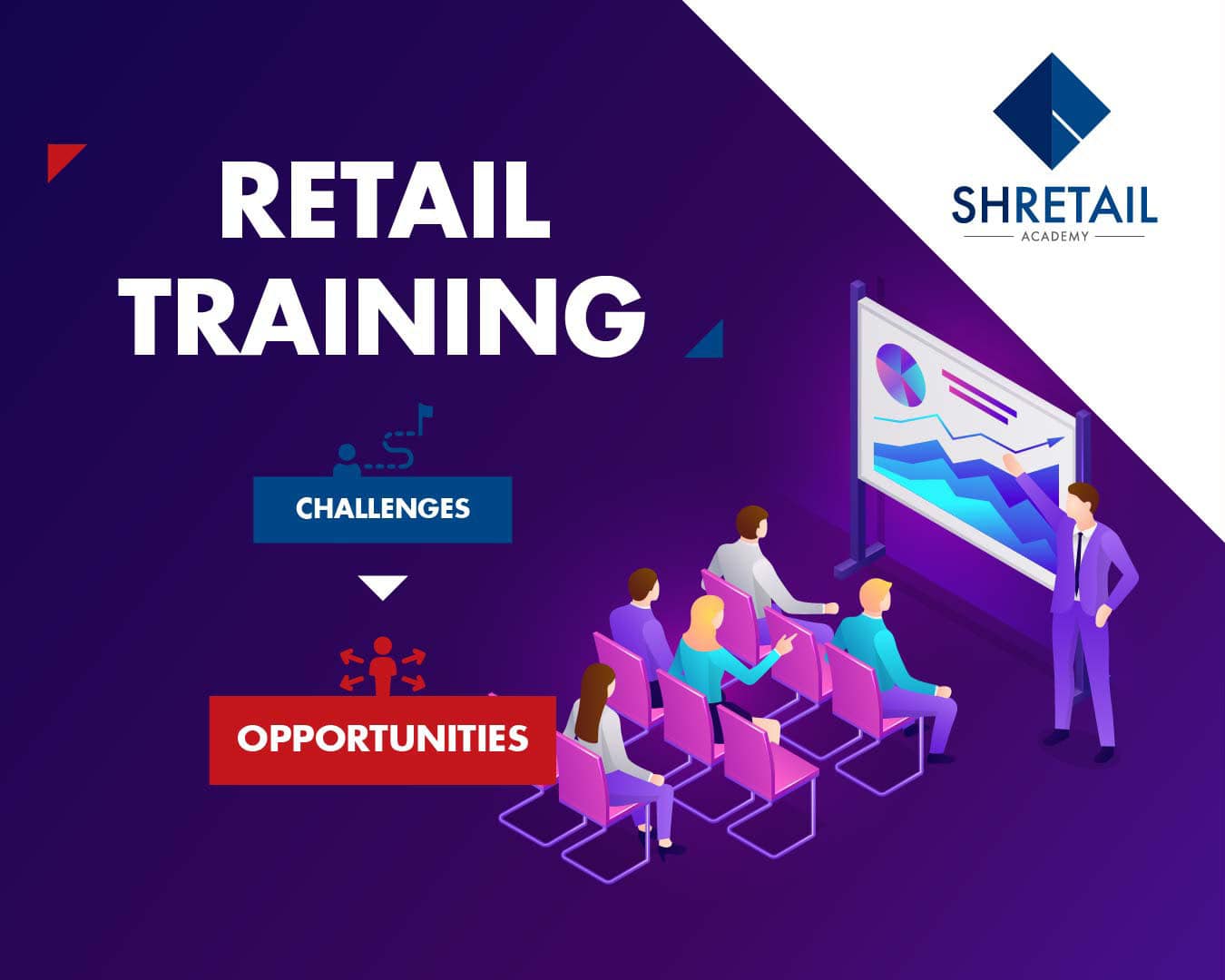
Turn Challenges into Opportunities with Retail Training
Aug 24 / Samantha
Most of us in the retail industry is faced with a Catch 22 situation: Customers are becoming more and more demanding, and employees kept leaving just when we needed them the most. To stay in the game, you’ll need a solid retail training strategy. ♦ Turn High Employee Turnover into Loyal Brand Ambassadors High employee turnover has always bugged the retail industry, and it hurts, driving up recruitment costs and reducing productivity. The solution to this is simple: online retail training. You see, when your workers sense that you are investing in their growth and advancement, they feel appreciated and valued. In return, they offer you the greatest gift of all - their loyalty and advocacy. ♦ Turn Customer Expectations into Customer Experiences By making buying anything just a touch away, the rise of online stores and automated shopping has made consumers more demanding. Consumers today want to be able to do everything themselves, while also having access to help when they need it. They want the in-store experience, but also the option of shopping online. They want immediate gratification, but also to feel special and understood. In short, they want the best customer experience at every point of the purchasing journey. Retail training, when done right, is a great tool you can use to turn this problem into an opportunity: by training your staff on how to help customers get the most out of your products and services, like how to use them, and what features are available. ♦ Make great customer service your competitive edge Your front-line employees are in direct contact with customers. This gives them the power to influence customer decisions, for better or worse. Whether customers purchase from you or your competitors depends on their experience in store. So, how do you turn this challenge into an opportunity? You guessed it! Online retail training. Whether it is how to handle unhappy customers or a full-day session on the latest best practices in sales techniques, online retail training provides your employees the knowledge and skills to provide exceptional customer service. If they succeed, so do you! ♦ Help Training-Resistant Employees Invest In Their Own Growth One of the issues everyone in retail can relate to is the cost of training. Training takes time to develop, time to deliver, and time away from work. Time, of course, costs money. If you have multiple branches, getting your employees to a classroom for training is a logistical nightmare. Online retail training makes learning more efficient, cost-effective, and personalized. For example, each employee can be assigned to the modules or courses that are most relevant to their job and experience. Plus, mobile accessibility means that employees don’t have to travel for training, and don’t have to be pulled away from their jobs, either. Instead, each employee can use the downtime between shifts and sales to learn what they need, when they need it. In conclusion, retailers can leverage on the power of online retail training to turn industry-wide challenges into opportunities to their own advantage. Have you done so yet? If not, why not?

New Retail Redesigns the Consumer Journey in China
Aug 17 / Samantha
Coined in 2017 by Jack Ma, the founder of Alibaba, the concept of ‘new retail’ has proven to be revolutionary. With New Retail, the consumer’s shopping journey is no longer defined as either online or offline but is now simultaneously both. In this article, we will take a look at what results when online merges with offline strategies. ♦ The ultimate store – immediate and hyper-connected In China, consumers use their phones for everything and scan dozens of QR Codes every week. In New Retail stores, you can try on clothes virtually, fill a virtual cart that will then be delivered to your home or pay via facial recognition without going to the checkout. New retail also enables immediate shopping, tapping to consumers’ need to “See Now Buy Now”. You see a product, you scan it, you leave, and it arrives at your home. Or even more agile, while watching a showcase of products, you can directly choose to have one on your plate or shopping cart. ♦ Quality Products that are traceable With New Retail, retailers are able to meet consumers’ increasing demand for quality products while improving their product range and optimizing space design. For example, at a Hema supermarket, you can watch short reports on the origins of items just by scanning the QR code of a product. This report will show you the product’s circuit, its origins, and its transformations. The information includes audits such as pictures of the distributor’s operating permits and food safety certificates. ♦ In-store displays that generate a strong desire to buy In China, stores are now lively: crustaceans wiggle in their tank, images on screens scroll, and staff assertively manoeuvre between customers. Your 5 senses are enhanced: taste, smell, touch, sight, and hearing. At a New Retail store, the clever use of sensory marketing aims at seducing the consumer by stimulating the senses in order to influence buying behaviour. ♦ Not a store anymore but an authentic living space New Retail is based on the concept of “Retailtainment”. In Hema supermarket and Carrefour Le Marché in Shanghai, in addition to the grocery section, cooks work every day to prepare freshly purchased products for those who wish to consume on-site. With New Retail, the store is no longer just a place to buy products but a place to live where you like to spend time. Consumers need a reason to leave their homes and go shopping. New Retail is that reason.
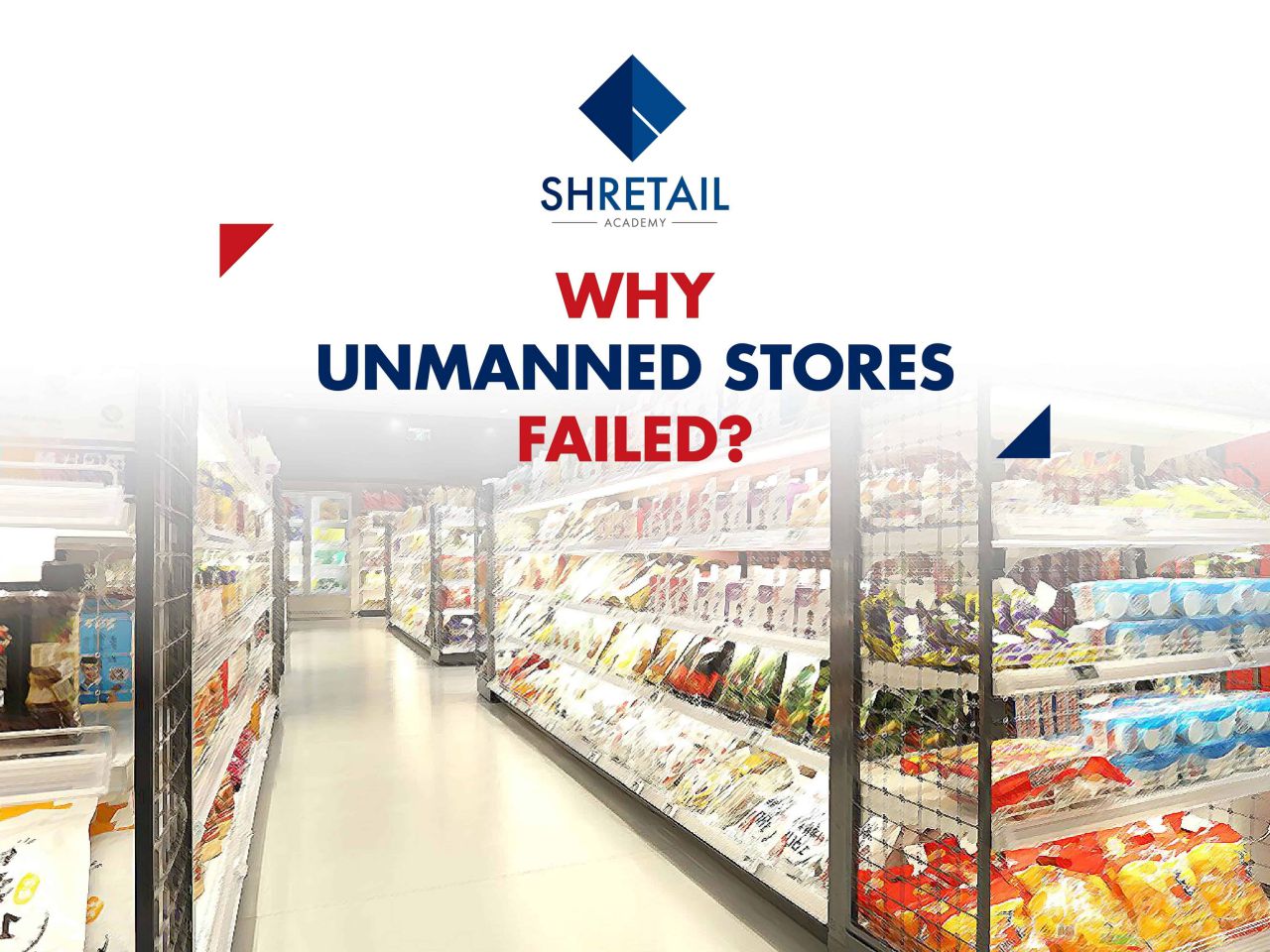
The Overlooked Importance of Human Capital In Retail
Jun 17 / Samantha
In 2018, Alibaba, buoyed by its retail arm, T-Mall’s e-commerce success in the Chinese Domestic Market, embarked on an ambitious venture to open various unmanned stores across China’s major cities. These retail stores are fully automated, equipped with various technologies such as electronic shelf labels, Radio-Frequency Identification (RFID), computer vision, and facial recognition, to name a few. The decision seemed to make perfect sense: lower labour costs, powerful data collection capabilities and greater operational efficiency, while offering consumers a glimpse of shopping in the future. Other tech companies soon joined the party, unmanned retail shops promptly mushroomed all over China, and the hype was real. How could anything possibly go wrong? Except it did. Fast forward to June 2020, and a large number of these unmanned stores closed down, as reported by Nikkei Asian Review: In Shenzhen’s electronics shop district, a Buy-Fresh Go store that had been heralded by the media as a model of automated retail closed after only about a year. In Guangzhou, i-Store, the first local unmanned convenience chain, closed 6 of its 9 stores. In December 2018, JD.com, China’s second-largest ecommerce company, announced the suspension of its smart shelf business — small unmanned shops the size of train station kiosks. So, what actually caused the downfall or unmanned retail? Turned out it was for exactly the same reason the business model existed – the absence of human personnel, which escalated problems such as: Technical limitations: Most unmanned stores faltered at delivering a seamless “just-walk-out” experience: some could handle only limited customers at once; others encountered glitches upon customer entry or exit. In customers’ eyes, unmanned convenience stores were simply not convenient enough. No added value: Unmanned store operators were so intent on proving their technological capabilities that they neglected the importance of creating a great customer experience. To customers, unmanned meant an impersonal and therefore unmemorable shopping journey. Dishonest customers: Research firm Trivium reports that Alibaba conducted an experiment in 2015 in which only 62% of shoppers actually paid for their goods at unmanned stores. With the absence of human personnel, cheating acts were difficult to detect. What can we learn from the failure of unmanned retail stores in China? Perhaps the biggest lesson here is that retail is essentially all about the customer experience, and adding a human element not only provides a personal touch to the customer experience, well-trained and knowledgeable sales personnel could even influence customers’ purchasing decision and drive up store revenue. Perhaps retailers could learn from this case study and start to invest more into their human capital in order to gain a competitive advantage in already saturated market. Food for thought.
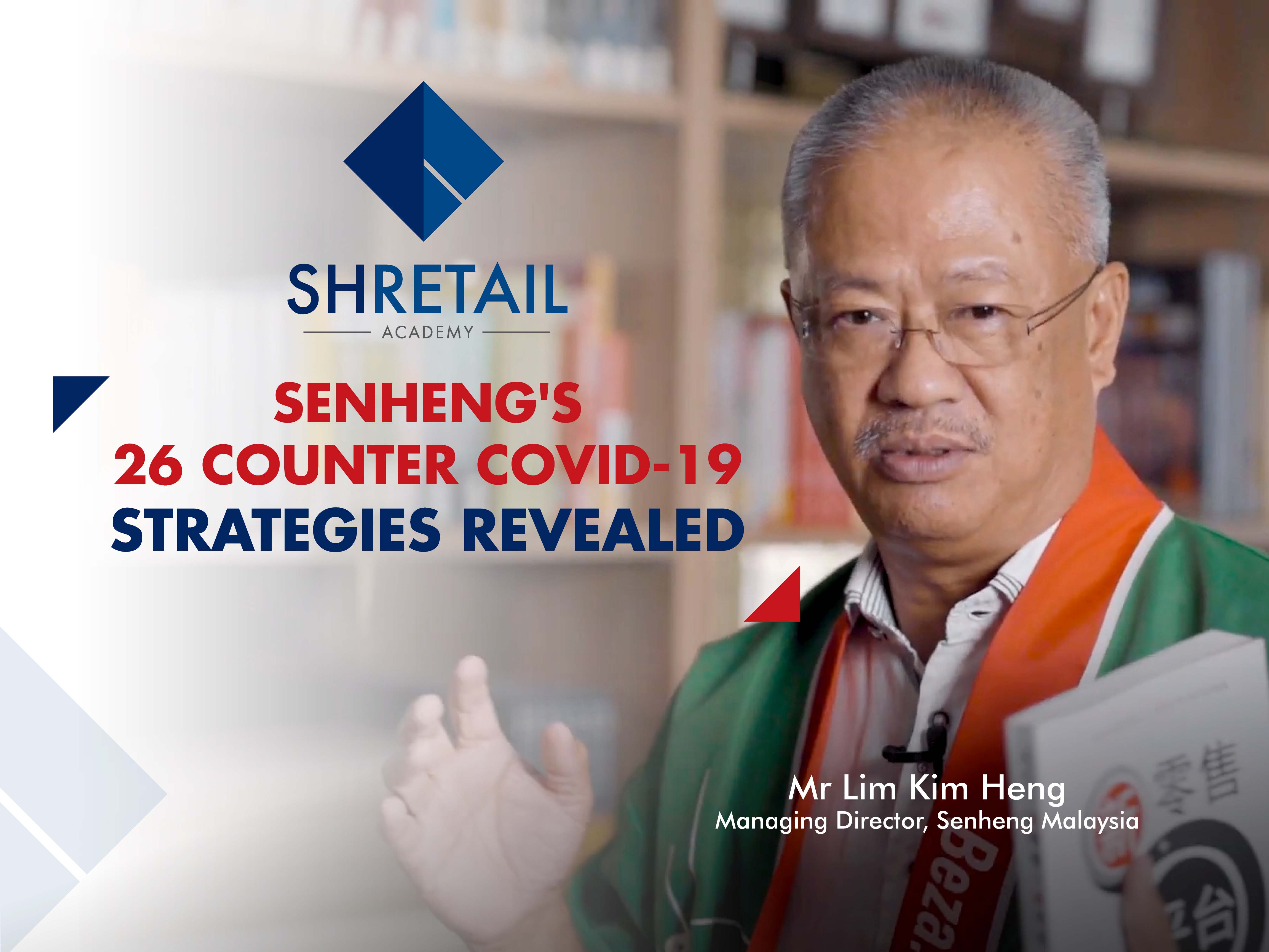
Counter COVID-19: 26 Secret Strategies that you can learn from Senheng
Jun 17 / Samantha
“The COVID-19 Crisis brought an unprecedented challenge in our 30 years in the retail industry,” quipped Senheng Founder and Managing Director, Mr Lim Kim Heng. “Its impact is at least 5 times worser than any economy crisis we’ve faced, but we managed to keep calm in the face of crisis, and planned counter measures to mitigate the financial repercussions from the early stages,” He added proudly. The results? How about a five-fold increase in online sales revenue during the first month of the MCO? Impressive. Here, we shall share with you the 26 secret strategies that Senheng used as counter measures against the COVID-19 Crisis: Secret #1: Seamless Senheng launched its Seamless concept in 2017, an online to offline retail experience that allows customers to shop across various channels whenever and however they choose. The market responded positively. Revenues immediately grew 6% in the first year and swelled to 26% in 2018. Secret #2: Telemarketing Converting its Customer Service Unit into a telemarketing call-centre focusing on receiving inbound and making outbound calls. This switch alone brought in a daily revenue of RM20-30k per day. Secret #3: Customer Loyalty Program Senheng’s Customer Loyalty Program centralizes on the idea of providing added value to customers in a fair manner, effectively eliminating the practice of price negotiation at the store. Most importantly, this allows them to have 2.6 Million customers’ data at their fingertips. Secret #4: Staff Conversion Using big data, Senheng converted 1900 of their retail and supporting staff into telemarketers with highly targeted matching of customers to telemarketers. Secret #5: Mobile Apps Senheng rolled out its own mobile app in 2016. By encouraging all of its members to use the app, Senheng saved more than RM1mil in printing and mailing expenses by going fully digital and paperless. Secret #6: Voucher Redemptions From big data, Senheng found out that there were 25,000 members that had cash vouchers worth RM200 that were not redeemed. Senheng’s telemarketers reminded members to redeem their birthday vouchers and to use their PlusOne points and EZ Credit Rebates to redeem products, and this spurred buying interest from the prospects. Secret #7: Inventory Management Senheng used artificial intelligence (AI) and business intelligence (BI) analytics to manage their inventory and stock replenishment according to actual demand without affecting its operations. Secret #8: Activate e-Training Together with SH Retail Academy (SHRA), Senheng did not reduce any investment into upskilling and training by going into full e-Training. Secret #9: Rent Renegotiation Senheng renegotiated its stores’ rental with landlords to a 30-50% reduction throughout a year-long period. Secret #10: Stretch Credit Period To improve cash flow, Senheng negotiated its credit period with its suppliers to an extra 30 days from March to September 2020. Secret #11: Overdraft Facility Use overdraft facilities provided by banks to pay for expenses during MCO. Secret #12: Bonds and Refinancing Senheng obtained much needed capital by issuing callable bonds and refinancing its assets to pay for rents payable, manufacturer’s invoices and staff payroll. Secret #13: Virtual Meeting All meetings to be conducted in web conference virtually unless necessary. Secret #14: HR Digitalization Digital HR system enable all Senheng staffs to work from home while maintaining their respective KPIs. Secret #15: Sell the Future Senheng sold cash vouchers worth RM100 for half the price that consumers could redeem at a future date. They sold out 764 vouchers on a single day. Secret #16: Increase Digital Budget By increasing budget spent in digital channels, Senheng manage to increase their sales via Senheng and senQ’s online store and Lazada to RM50-60k/day from RM10k/day last year. Secret #17: Corporate Social Responsibility Senheng received requests for sponsorship of air-conditioners from 12 hospitals, and successfully obtained travel permits to transport the air-conditioners from the authorities. Secret #18: Last-mile Delivery Senheng’s participation in CSR initiatives enabled them to obtain the relevant permit to fulfil last-mile delivery that was previously halted due to the MCO. Secret #19: Merging Departments Senheng merged its retail sales unit with the telemarketing unit, which enabled its retail sales staff to use the downtime to perform telemarketing activities, improving work efficiency in the process. Secret #20: Telemarketing App Senheng launched a Telemarketing App within a short period of time to support and track telemarketing performance. Secret #21: iPET Launch Senheng’s subsidiary company, iPET Technology Sdn Bhd (iPET), the first Pets Social eCommerce platform that equipped with features like AI technology & big data analysis. Going digital helped saved cost such as rental and warehousing. Secret #22: Develop New Products Senheng used the analogy; ”selling tour packages to the moon” to describe this approach, where they believe that anything can be sold. Secret #23: Staff Assurance Senheng assured all staff that they will not have to worry about being forced to take unpaid leaves and salary reduction during this period of hardship. Secret #24: Lean & Mean Senheng adopted a lean and mean management approach to its finances, slowed its expansion plans, and scaled down on unnecessary expenses. Secret #25: Strategic Partnerships Senheng formed win-win partnerships with its business partners P1 Citi, P1 Lazada, Aeon Credit Express, AIG Rebate and MBB Free Admin fees to leverage on their customer base. Secret #26: Marketing Formulate effective marketing activities to engage with customers and encourage participation. So, there you go! All the 26 secret strategies used by Senheng compiled for you. Lastly, to sum up, here’s a summary of what we can learn from Senheng’s experience: The online cake can be bigger Data is king Digitalization allows us to become more flexible New business channel established – Telemarketing New products – Sell the future Past engagement with our “Lovers” is simply insufficient E-training is a must Lightweight lean business model National Agenda – Drive digital transformation with all Malaysians SMEs

4 Ways the Covid-19 Pandemic Will Reshape Shopping Behaviour
May 21 / Samantha
In case you missed the news, the World Health Organization has warned that war against the Covid-19 pandemic might go on for at least 2 years, before a vaccine could be found. That means, even after the Movement Control is lifted, social distancing will be the new norm, and consumer shopping behaviour in Asia will be redefined as a result: here are four key trends to expect in the post-pandemic world: ♦ Shift in spending towards essentials and ‘affordable luxuries' Consumer confidence in Asia is currently at an all-time low, with only 27% of shoppers having a positive view about their personal finances over the year ahead. Unsurprisingly, the majority of consumers intend to cut back on big-ticket items such as luxury fashion and furniture. While demand for essentials such as groceries and household goods remain robust, 4 in 5 Asian consumers also state that they will not be cutting back their expenditure on beauty and personal care items. During times of economic crisis, beauty and cosmetics are seen as affordable luxuries that provide a form of escape from the doom and gloom. ♦ Transparency is critical in fulfilment battle Quite expectedly, the pandemic resulted in a huge surge in e-commerce activity. Nearly half of all shoppers in Asia intend to increase their online spending versus physical retail over the coming year, while 38% will keep it at the same level. With so much spending set to shift online, retailers will need to stand out from the competition by sharpening their fulfilment proposition. While consumers in Asia value free shipping service the most (86%), in terms of costs this might not be feasible for all retailers. However, it’s important to note that offering transparency in the fulfilment process – such as being able to track deliveries (83%) or picking a delivery time slot (76%) – trumps speedy fulfilment services such as same-day deliveries and delivery within two hours. ♦ Broader acceptance of retail formats that support the circular economy The notion that Asia is lagging behind when it comes to support for sustainability initiatives can be put to rest. Two-thirds of all consumers in Asia state that they will consider a brand’s sustainability credentials when making a purchasing decision. At the same time, nearly half of all respondents say that they shop for pre-owned and second-hand merchandise. The report also finds that the acceptance of rental services – such as those offered by Style Theory and Covetella – are gaining traction. With personal finances expected to remain under pressure, demand for similar circular business models is set to increase further in the coming year. ♦ Technologies that aid social distancing in physical retail Once lockdowns are lifted, there will be renewed enthusiasm in consumers that simply want to go out for a visit to the shops. However, retailers need to take note that the consumer psyche has changed and shoppers will naturally be more hesitant about physical contact in a store setting. Brick-and-mortar retailers need to latch on to this sentiment and invest in the appropriate technologies to make shoppers feel more comfortable. Scan-and-go technology, whereby consumers’ mobile phones are used to scan products and pay at the end, would be a great way to achieve this as four in five Asian shoppers (79%) state that they are open to using this technology if available. Similarly, 71% would make use of automated check-outs – such as those seen in unmanned retail concepts.

Why Sales Training is Vital For Retailers
Apr 26 / Samantha
In our last March article, we’ve discussed 4 trends that are happening in the retail industry today and how it can affect retailers. To remain competitive, retailers have to rethink their strategies and find ways to add value to their offerings quickly, which is no easy task. The good news is that good Sales Training can support all the trends impacting retailers today! A January 2019 Study by Training Industry demonstrated how high-quality sales training programs can produce significant benefits for a sales organization. In summary, here are some ways a well-designed sales training program can dramatically improve the performance of a retail organization: More Reps Achieving Quota Organizations with effective sales training programs were 20% more likely to have over 75% of their salespeople reaching quota than companies with ineffective programs. This can help offset some of the issues caused by the rise of e-commerce and the decline in consumer confidence. Improved Customer Experience 45% of organizations with overall effective sales training were reported to deliver a very high-quality customer experience. The reverse was also true — organizations providing a low-quality customer experience also didn’t have effective training programs in place. This showcases the importance of training as a highly effective tool for retailers looking to align with changing customer expectations. Developing Soft Skills Organizations with effective sales training programs are more likely to focus not just on compliance and product knowledge, but also on soft skills such as identifying customer needs and then aligning solutions to those needs. Effective sales training programs can help offset some of the social media impact by preparing sales reps with the right knowledge and skills to support customers’ purchase inspiration. Ultimately, frontline staff are the heart and face of the retail industry, and it’s important for leaders to equip them with the skills, knowledge and behaviors that provide your organization with a competitive advantage in today’s volatile environment. In a nutshell, retail sales training is the only sustainable marketing program for brick and mortar retailers, because untrained employees drive down your overall sales. They are inefficient and passive when it comes to driving a sale, and it would take them longer to sell something compared to a trained employee. That leads to lower conversion rates and lower overall sales. The good news is that when you have crafted a retail sales training strategy around an excellent customer service experience, every interaction is mapped, every encounter outlined, and metrics can be placed to analyze how well you are doing at creating an exceptional experience. That goes much further than “how much did we do today” or “how did we compare to last year” SH Retail Academy can help you do exactly that! Check out our “Retail Operations Staff Competence Series” at https://shretailacademy.com.my/program for a series of training programs that aim to elevate your staff’s selling prowess now!
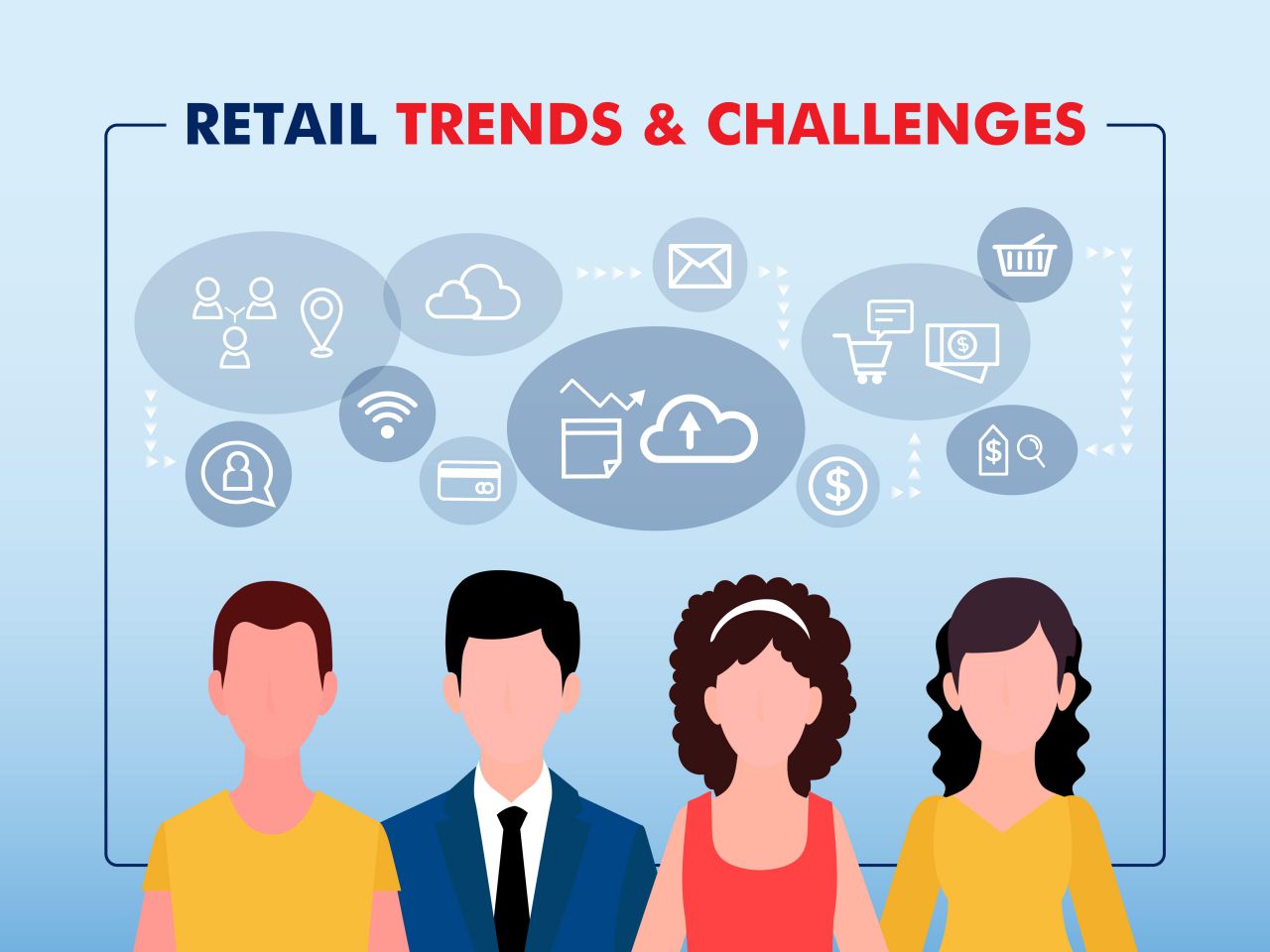
CHANGING TRENDS IN RETAIL TODAY
Mar 24 / Samantha
In today’s changing retail landscape, retailers are facing multiple challenges – a shift in consumer behaviour and market preferences, the advent of technology, cannibalisation from stiff competition in a saturated market and increasing customer expectations, to name a few. Let’s take a look at each of these emerging trends in retail and discuss how training can help retailers wade the storm. Rise of E-commerce More than 26m Malaysians use the internet today, and data from Global Web Index shows that 80% of internet users between the ages of 16 and 64 in Malaysia are already shopping online. Revenue in the eCommerce market amounts to USD 4,337m in 2020 and is expected to show an annual growth rate (CAGR 2020-2024) of 8.4%, resulting in a market volume of USD 5,995m by 2024. This compares to the mundane growth of traditional retail of 2.2% per annum. This poses a significant threat to traditional retailers, which constantly struggle to compete not only in-store but also online. Impact of Social Media Social media has a significant impact on consumer preferences and expectations, especially in Malaysia. According to a study by PwC, 47% of respondents turned to social networks and visual social networks as their main source of purchase inspiration. A staggering 25 million Malaysians (78% of the population) are active social media users. Hence, traditional retailers can definitely benefit from these trends by ensuring Instagram-worthy experiences in their stores. Stiff Competition and Market Saturation In Malaysia, the uncontrolled building of shopping complexes in the last decade has contributed to an overcrowded market in the retail sector. In 2019, the National Property Information Centre counted 1,035 shopping complexes in the country, offering 16.42 million sqm of retail space. 39 more shopping complexes with total retail space of 1.52 million sqm will soon come on board and another 27 shopping complexes with 1.03 million sqm are being planned. This has created cannibalization and stiff competition, with retailers jostling each other vying for the attention of shoppers amidst reducing footfall in the industry. Increase in Customer Expectations E-commerce platforms like Lazada are increasing customer product knowledge and raising consumers’ expectations around speed and cost of product delivery. The new generation of shoppers is increasingly looking for instant gratification – they want things faster and with greater relevance, and they’re looking for an elevated level of interaction. Besides that, consumers now demand more brand story and authenticity, as they need to feel some form of relevant emotional connection to a brand, if not purchases will not take place. Whether it’s about buying a coffee, purchasing a new laptop or upgrading a vehicle, retailers need to listen to customer requests and be prepared to deliver on those needs. In order to thrive in a competitive industry, retailers need to stay dynamic and innovative, track consumers’ changing expectations, and swiftly react by creating more value to consumers. Is your retail business ready to embrace these changes? Do your staff possess the necessary skill to adapt to these changes? In our next article, we’ll share how implementing a good training program for your staff might be able to soften the blow. So stay tuned for more!

Why We Retailers Should Invest in Our Employee’s Development
Feb 29 / Samantha
Retail is one of the industries with the highest employee turnover rates. Retaining staff remains one of the toughest challenges within our industry. On the other hand, replacing employees requires a lot of energy and costs. So, should you still invest in your employees’ development? “The only thing worse than training your employees and having them leave is not training them and having them stay.” ~ Henry Ford Employees are your company’s most important assets and ultimately, the strength of your organization will be based on the quality of your people, and how well you train, promote and treat them. Hence, their training and professional development is something you should invest heavily in. Here are the 8 core reasons why: Addressing weaknesses A training program allows you to strengthen those skills that each employee needs to improve. This helps reduce any weak links within the company who rely heavily on others to complete basic work tasks. Providing the necessary training creates an overall knowledgeable staff with employees who can take over for one another as needed, work on teams or work independently without constant help and supervision from others. Improved employee effectiveness A report from Hewlett Packard revealed that untrained employees take up to six times longer to perform the same task as a trained employee. The right kind of training can help your employees develop stronger sales skills and greatly increase their productivity. For example, trained staff may be to make the distinction between a customer looking for assistance and one who wants to be left to browse undisturbed. Sometimes this is a hard call to make, but training can help your employees learn to assess what customers really want. Improved employee satisfaction and morale The investment in training that your company makes shows your employees that they are valued. This creates a supportive workplace environment. Employees who feel appreciated and challenged through training opportunities may feel more satisfaction toward their jobs. Reduced employee turnover Staff is more likely to feel valued if they are invested in and therefore, less likely to change employers. Training and development are seen as additional company benefits. You’ll get to lower your recruitment costs due to better talent retention. Ensure consistency A robust training and development program ensures that your employees have a consistent experience and background knowledge. This is particularly relevant for your company’s basic policies and procedures. Increased efficiencies in processes result in a consistent customer experience which would generate financial gain for your company. Happy employees, Happier customers Since your employees are the ones who are actually in contact with your customers, how they think and feel is actually a better representation of your company than all your marketing and advertising material ever could be. Employees who are engaged are more likely to improve customer service which could result in up to 20% increase in sales. As Jim Rohn puts it, “One customer well taken care of could be more valuable than $10000 worth of advertising.” Grow internal leaders Retail training is a perfect way for companies to develop their own leadership and, as a result, retain top talent. Companies need to learn to promote from within, whenever a situation arises. In short, give your top employees a reason to work for you by investing in training techniques that grow leadership skill sets. Enhances company reputation and profile A retail business that invests in its staff will be recognized as being forward-looking. This makes your company more attractive to potential new recruits who seek to improve their skills and the opportunities associated with those new skills. Workers who stay with a retail outlet for many years usually do so because they feel contented with their employer’s dedication to staff development. Providing regular training to your employees not only optimizes their competencies, it increases employee engagement as well. Seeking for a reliable and experienced partner to conduct training programs for your employees? With decades of experience in the retail sector, we at SH Retail Academy can act as a catalyst to help you solve your challenges by improving the level of your employees and making them energetic about the workplace every morning! To know more about our courses, please visit here >> SHRA Programs
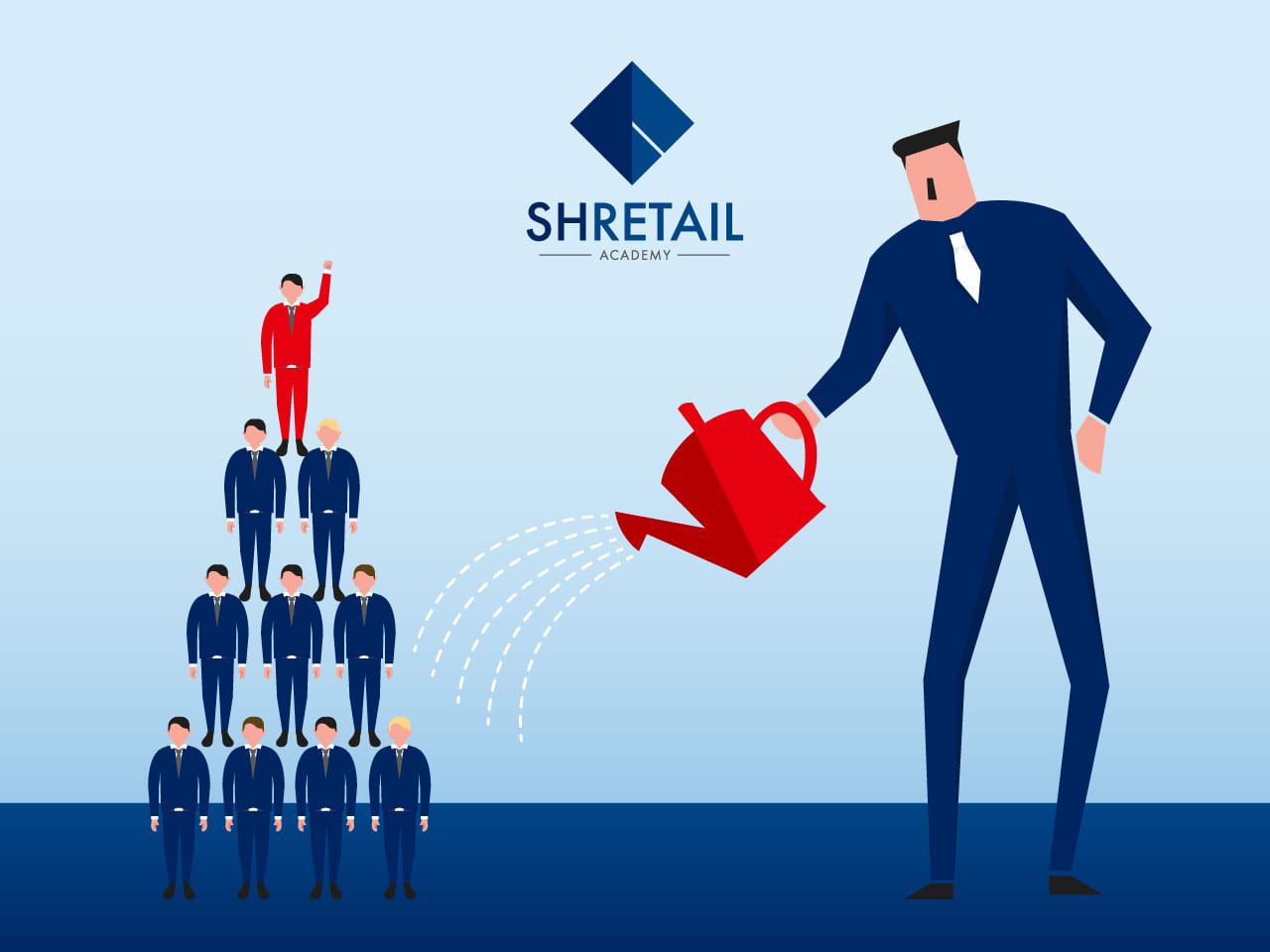
Top 10 Leadership Skills in the Workplace
Feb 03 / Samantha
A company is only as good as its people. That’s why we need leaders. A Good leader: Sets the vision and steers the ship Motivates and raises the morale and confidence of employees Makes the tough call and solves critical problems Inspires collective identity and instills culture within the organization Communicates strategic direction clearly and listens to employee feedback Empowers employees to contribute towards achieving the organizations goals Great leaders not only have the ability to communicate well, motivate their team, handle and delegate responsibilities, listen to feedback, and have the flexibility to solve problems in an ever-changing workplace, they create more leaders too! By doing that, they expand their people’s capacity and so the organisation’s capacity to change and to grow. They increase its resilience, agility and capacity to succeed. So, let’s have a look at the TOP TEN(10) leadership skills that can mould you into becoming a strong leader at your workplace: 1. Communication Leaders with good communication skills are able to clearly and succinctly explain everything from organizational goals to specific tasks to their employees, boost their team’s productivity and morale, and subsequently enjoy better relationships with the people around them. 2. Motivation Leaders inspire their employees to go the extra mile to help their organizations reach its goals; They have a clarity of purpose and keep their team engaged and focused. They do this by actively involving, entrusting and empowering their employees while caring and nurturing them to perform at their best. 3. Delegating Leaders who try to take on too many tasks by themselves will struggle to get anything done. A strong leader must know how and who to delegate to, as only by delegating tasks to staff members, can they focus on the tasks that really matter. 4. Positivity A positive attitude can go a long way in an office. If employees feel that they work in a positive environment, they will be more likely to want to be at work, and will therefore be more willing to put in the long hours when needed. 5. Trustworthiness Employees need to be able to feel comfortable coming to their manager or leader with questions and concerns. It is important for leaders to demonstrate their integrity – employees will only trust leaders they respect. By being open and honest, they can encourage the same sort of honesty in their employees. 6. Creativity Most employees are impressed and inspired by a leader who doesn't always choose the safe, conventional path. Therefore, a good leader needs to be able to think outside of the box. Creative leaders have the ability to create and realize innovative solutions especially in the face of structurally complex or changing situations. 7. Feedback One of the most critical areas for leadership success is being able to give honest feedback: praise when it’s deserved and coaching in the moment. By giving constructive feedback, leaders help individuals grow by learning how they can improve and by reinforcing the activities they are doing well. This ultimately helps them achieve both personal and organizational goals. 8. Responsibility Leaders manifest the quality of responsible behaviour through a willingness to take charge and not shirk from decisions, doing things for which there is no immediate reward, but that are in the organization’s best interests. Responsible leaders stay on top of problems by cultivating the mindset that says, “I am the person who must make this happen.” 9. Commitment A leader who is committed shows the conviction and belief that the leader has in the cause. Commitment is a leadership quality that inspires and attracts people. A team will buy into the team leader before they buy into the vision. It is important for leaders to walk the talk and follow through with what they agree to do. 10. Flexibility Good leaders know that although they are committed to their decisions, they have to stay flexible in their approach. Mishaps and last-minute changes always occur at work. Employees will appreciate a leader’s ability to accept changes in stride and find creative solutions. Similarly, leaders must be open to suggestions and feedback. They must always listen to their staff’s concern and be open to making necessary changes. So, there you have it – The 10 essential leadership skills in the workplace. Research has shown that good leaders can make a success of a weak business plan, but a poor leader can destroy even the best plan. That’s why developing effective leadership by having a talent management program at all levels across the organization can return significant business value. Need help with that? With 10 programs just for leadership development, SHRA can help you build a more sustainable future. Get in touch us at www.shretailacademy.com.my to know more!




